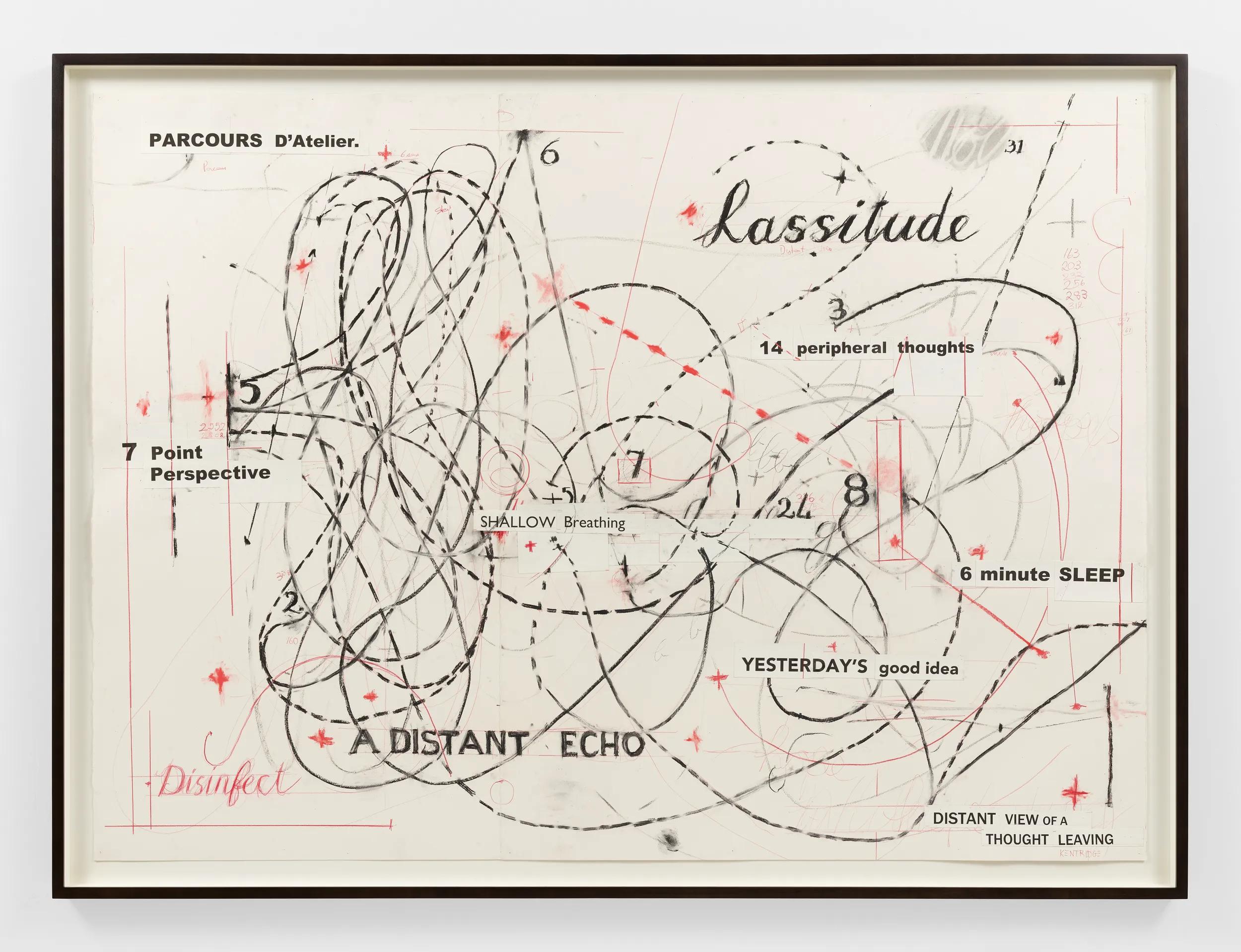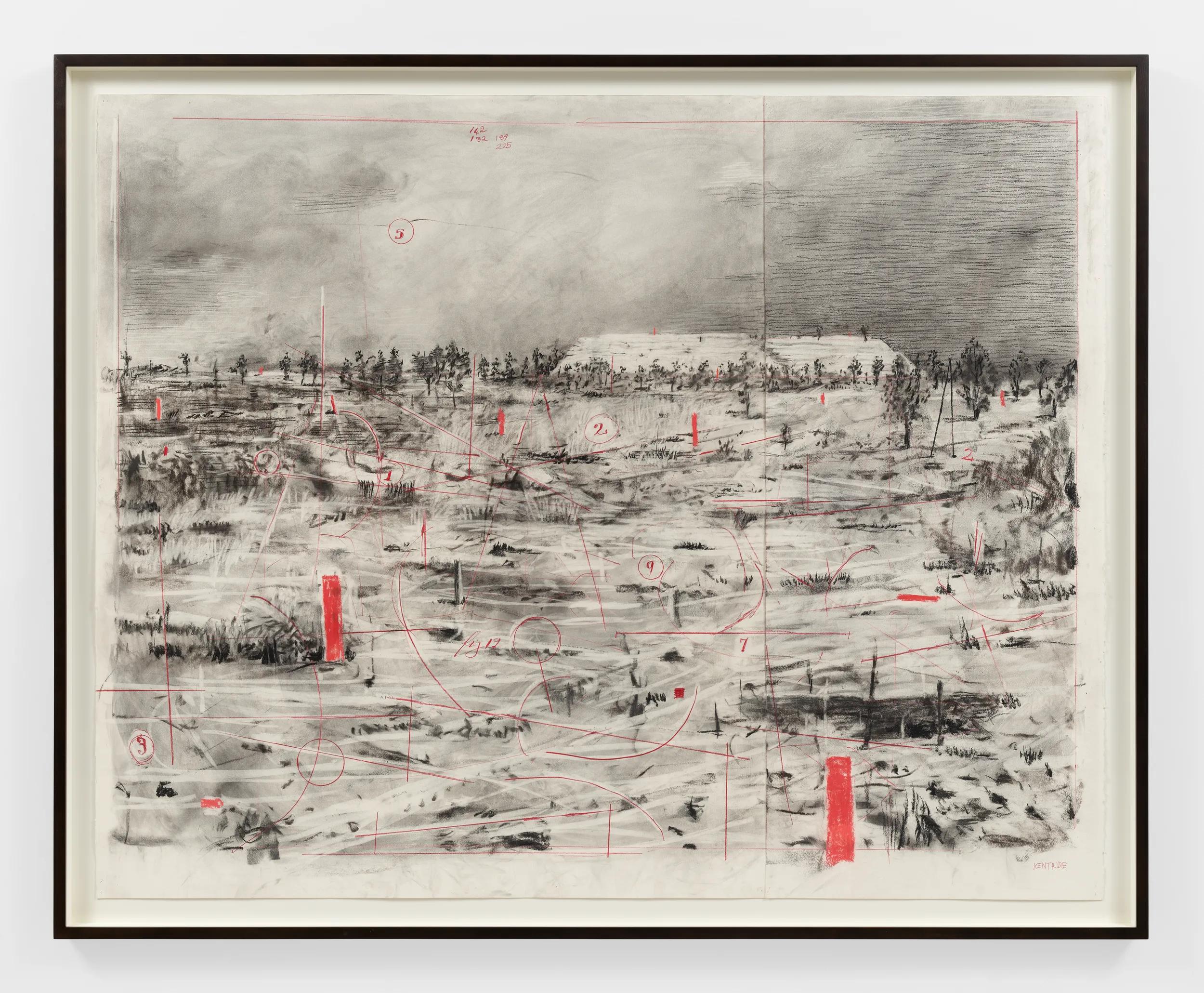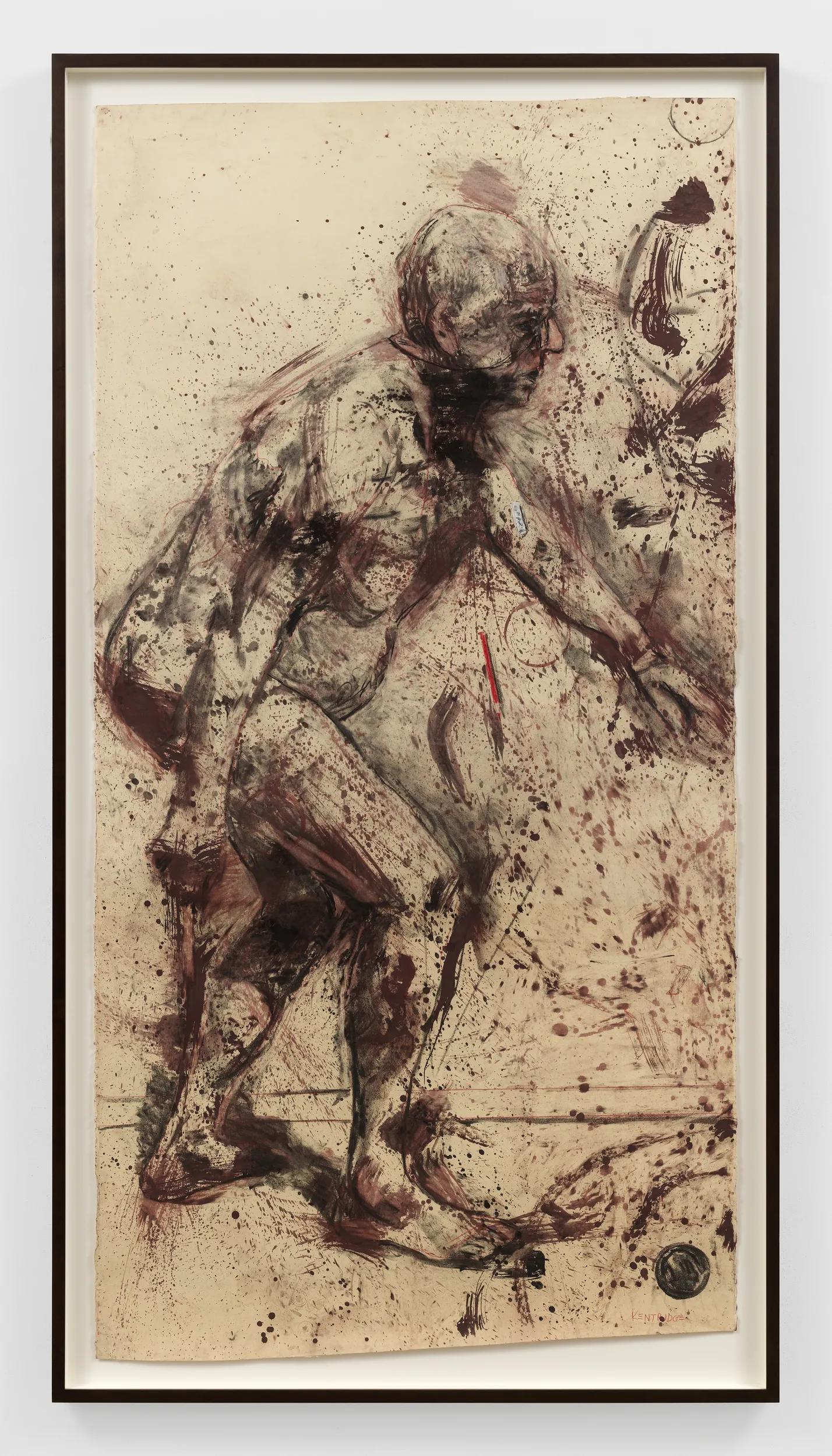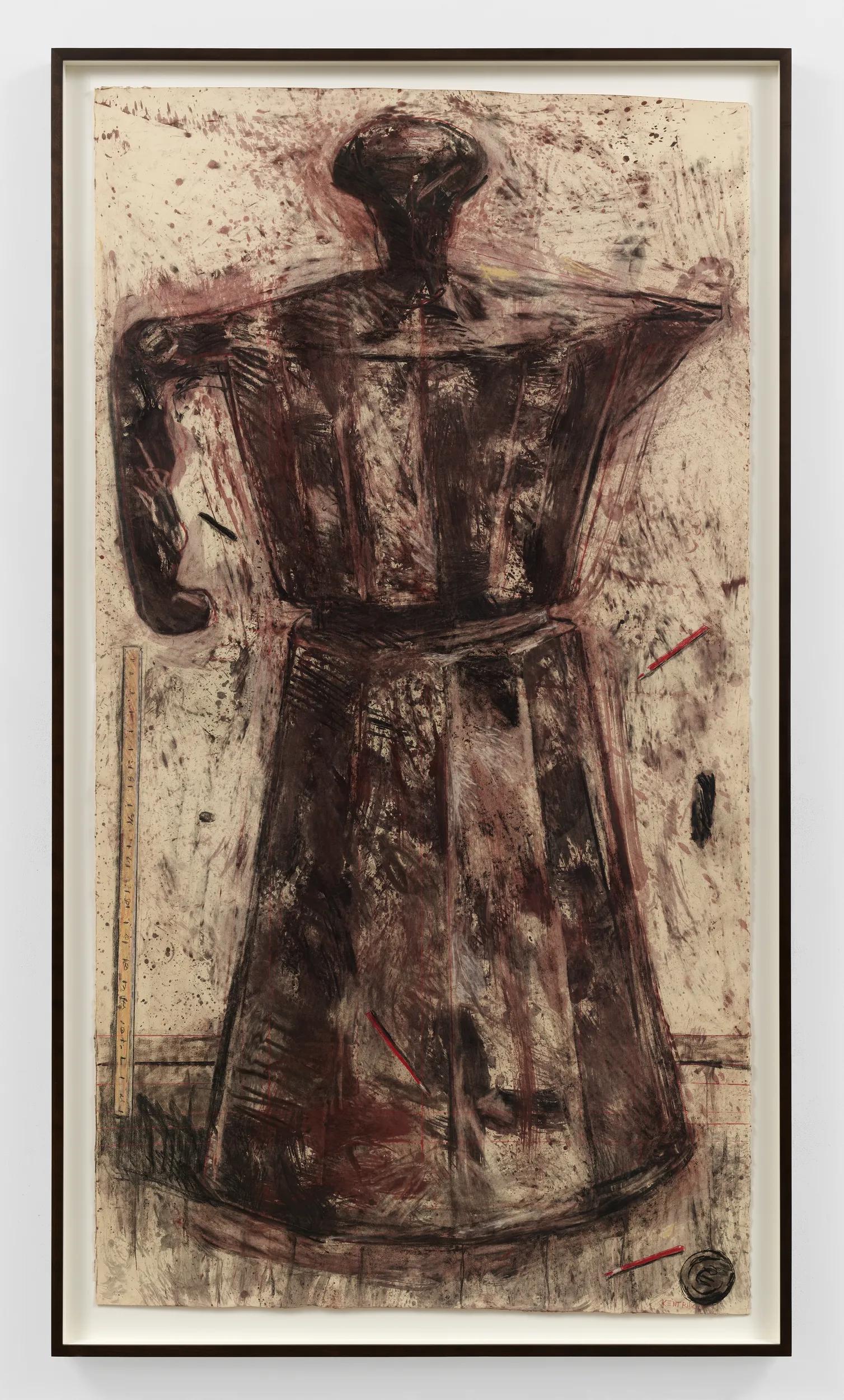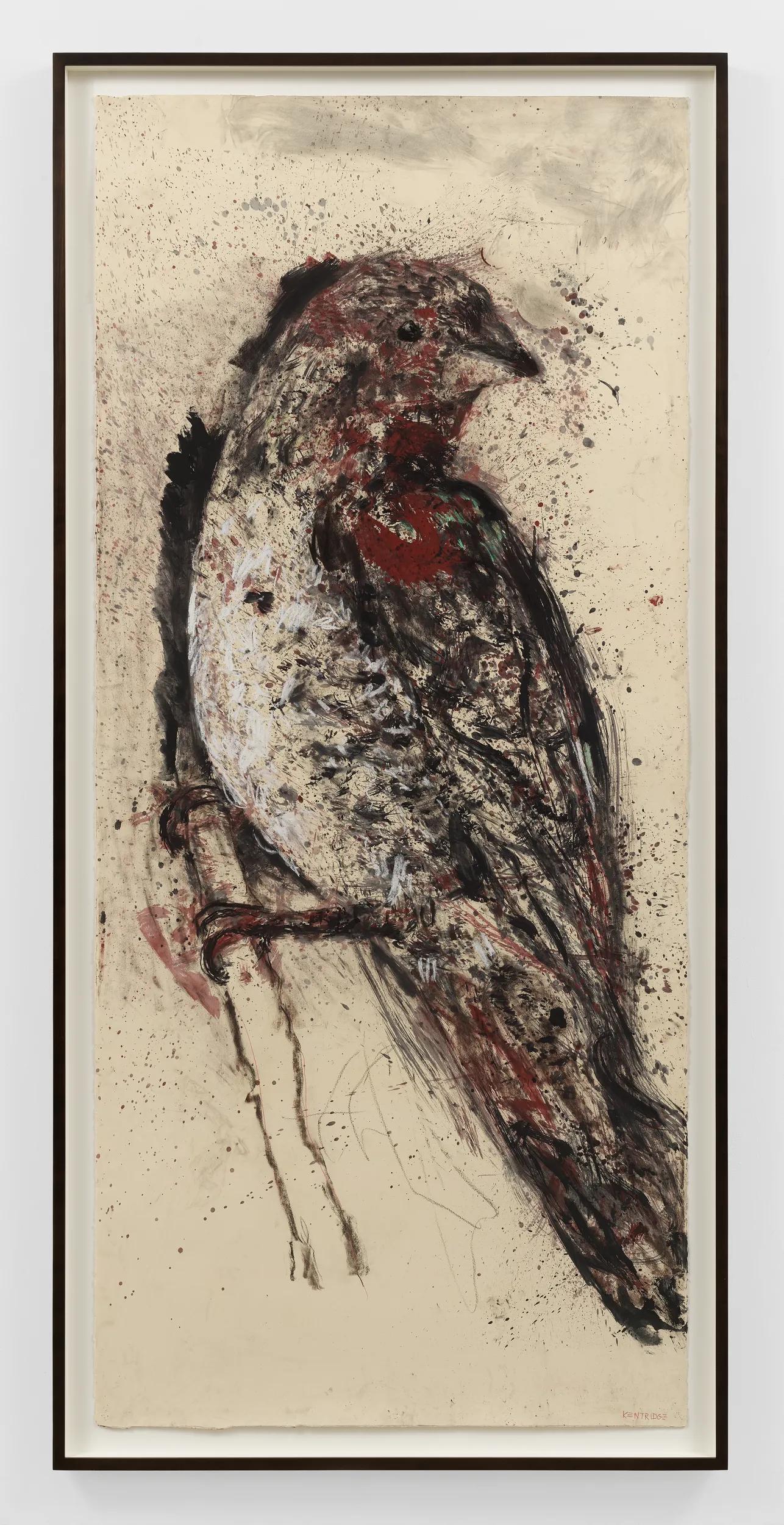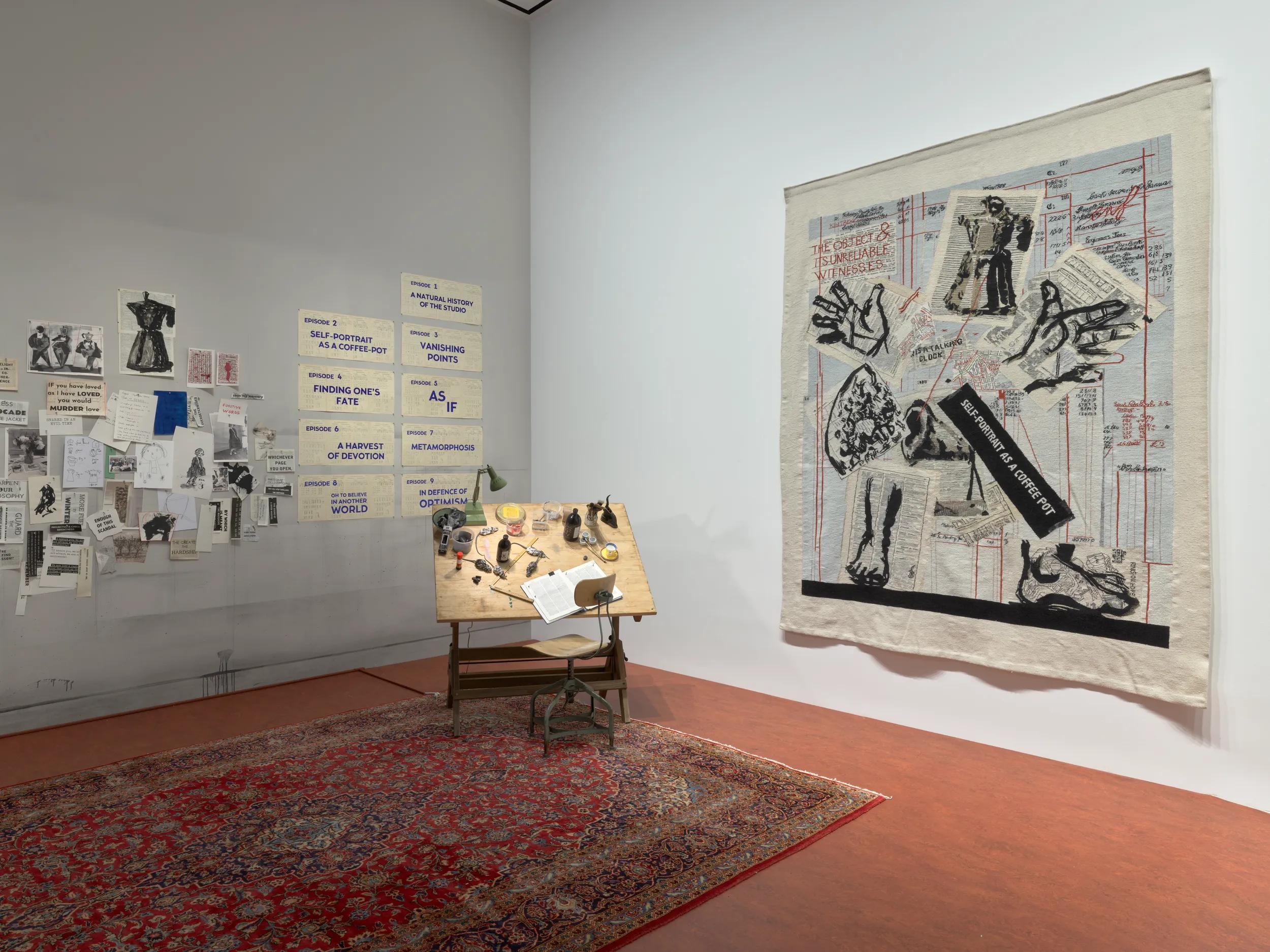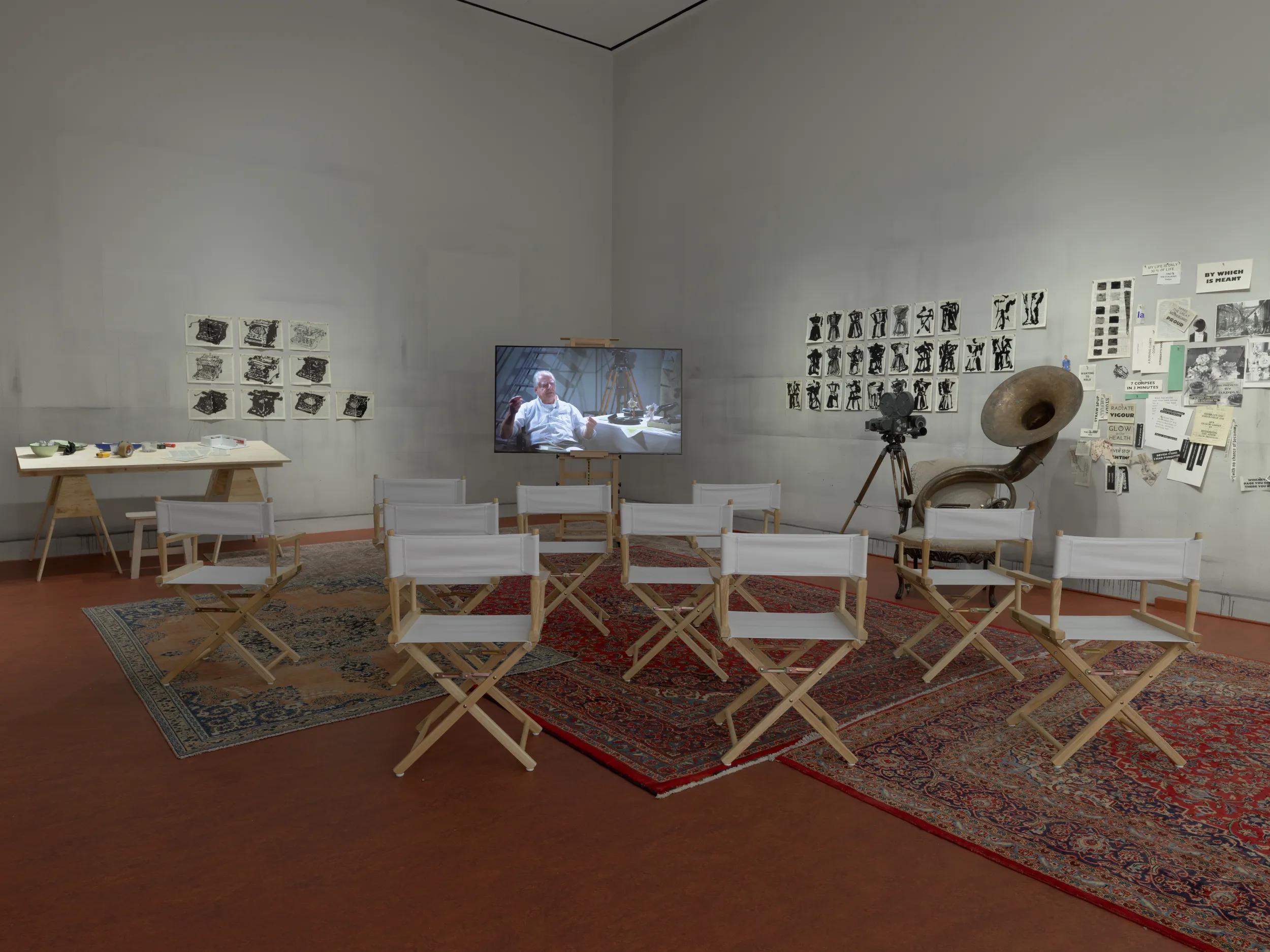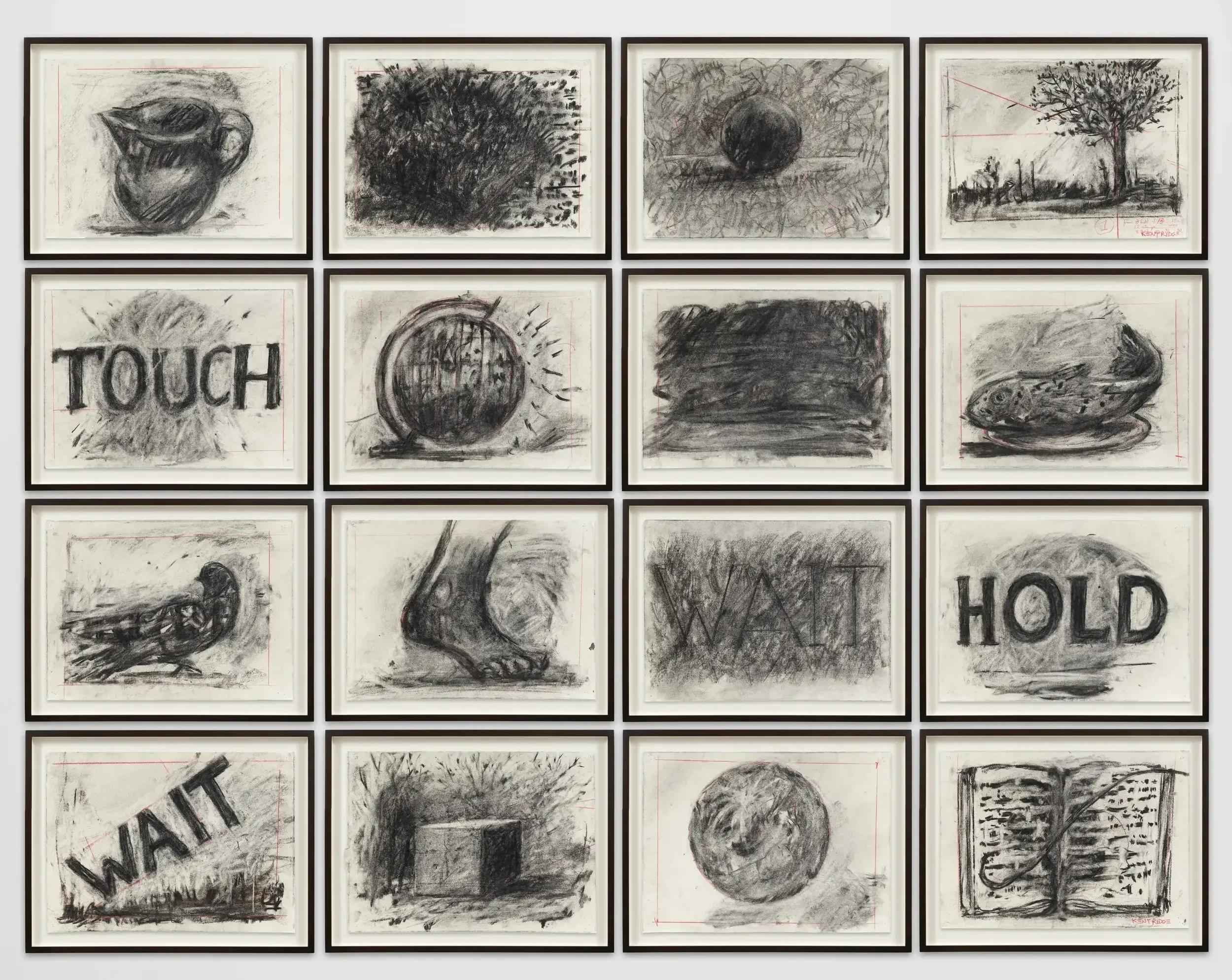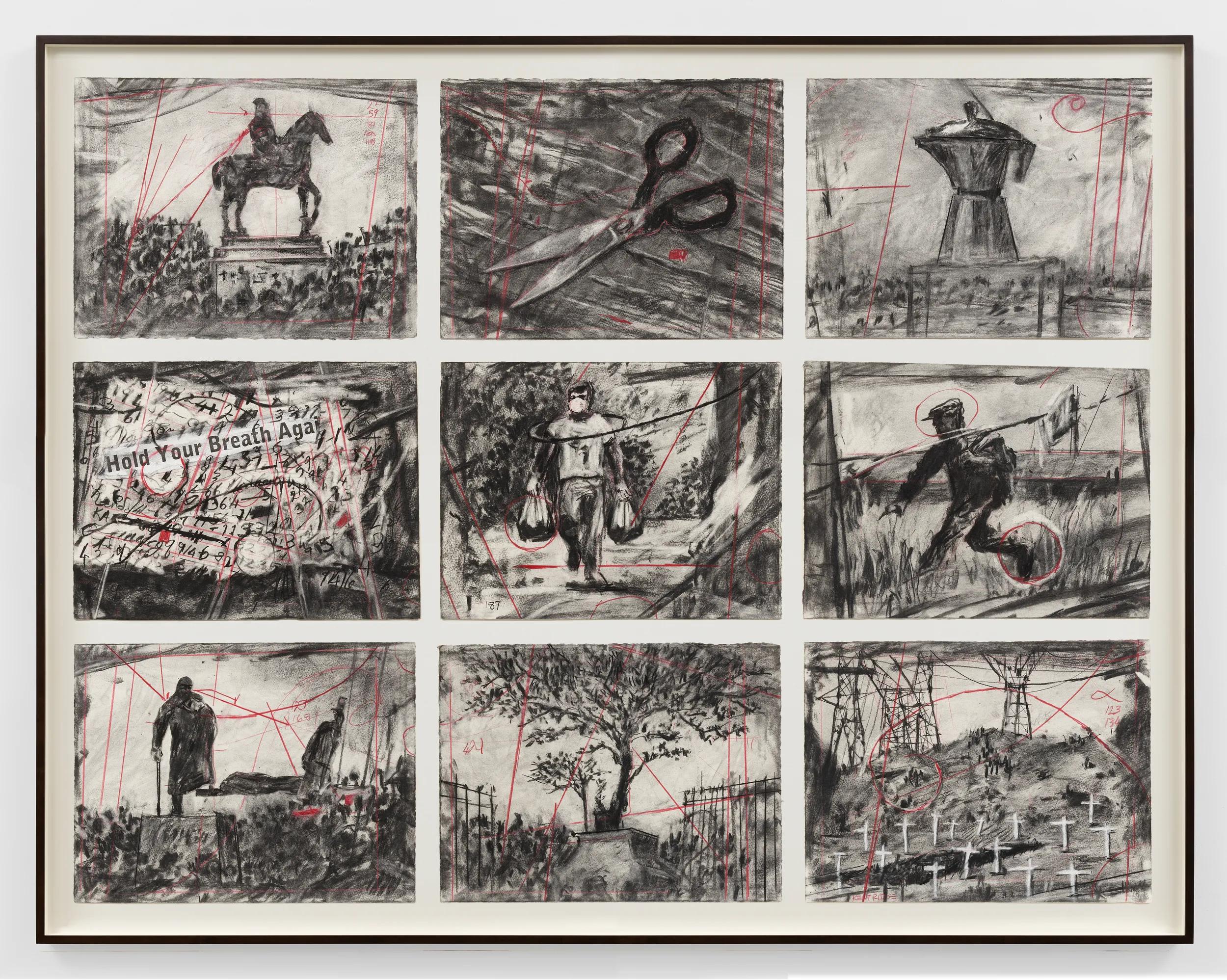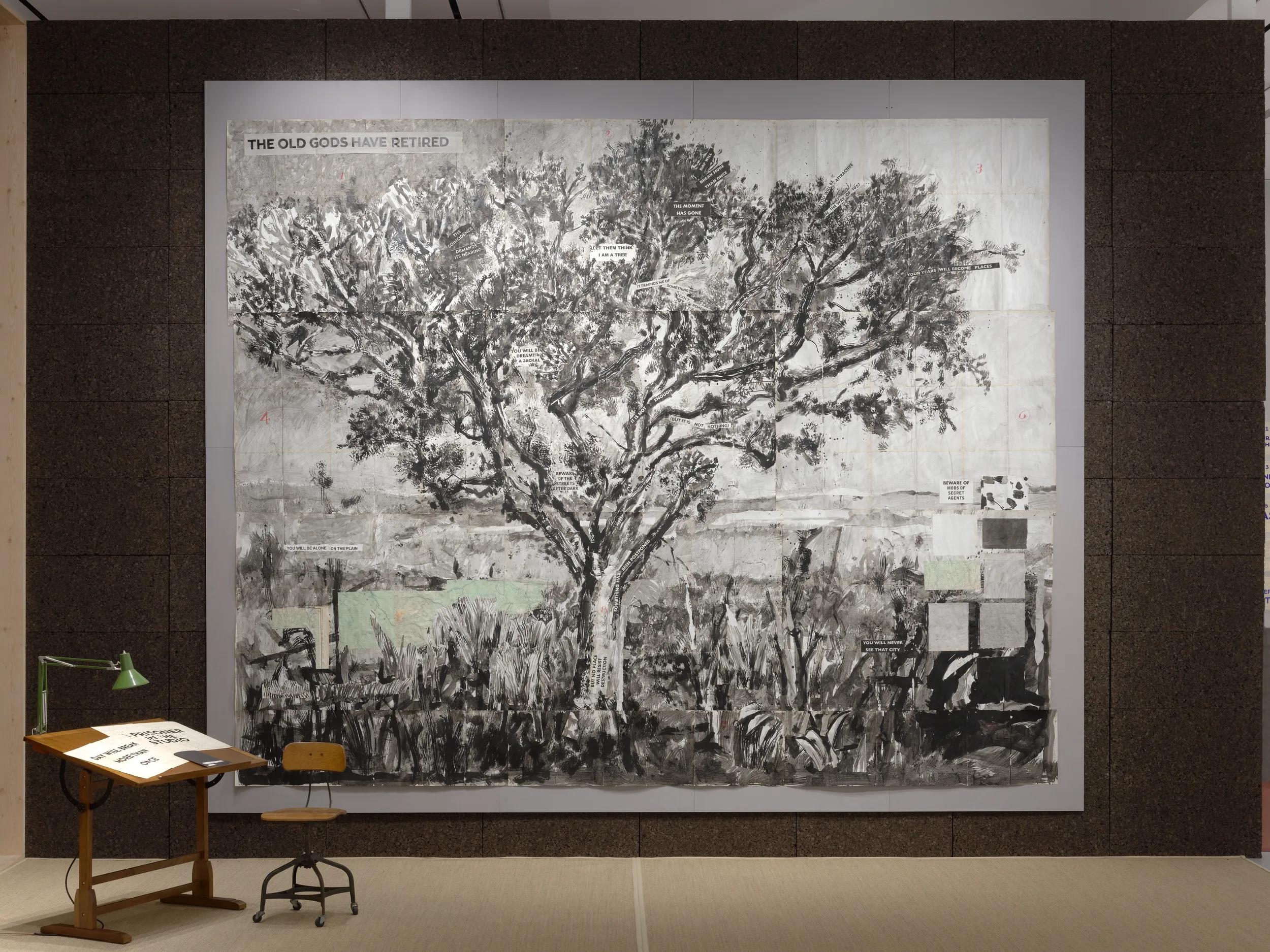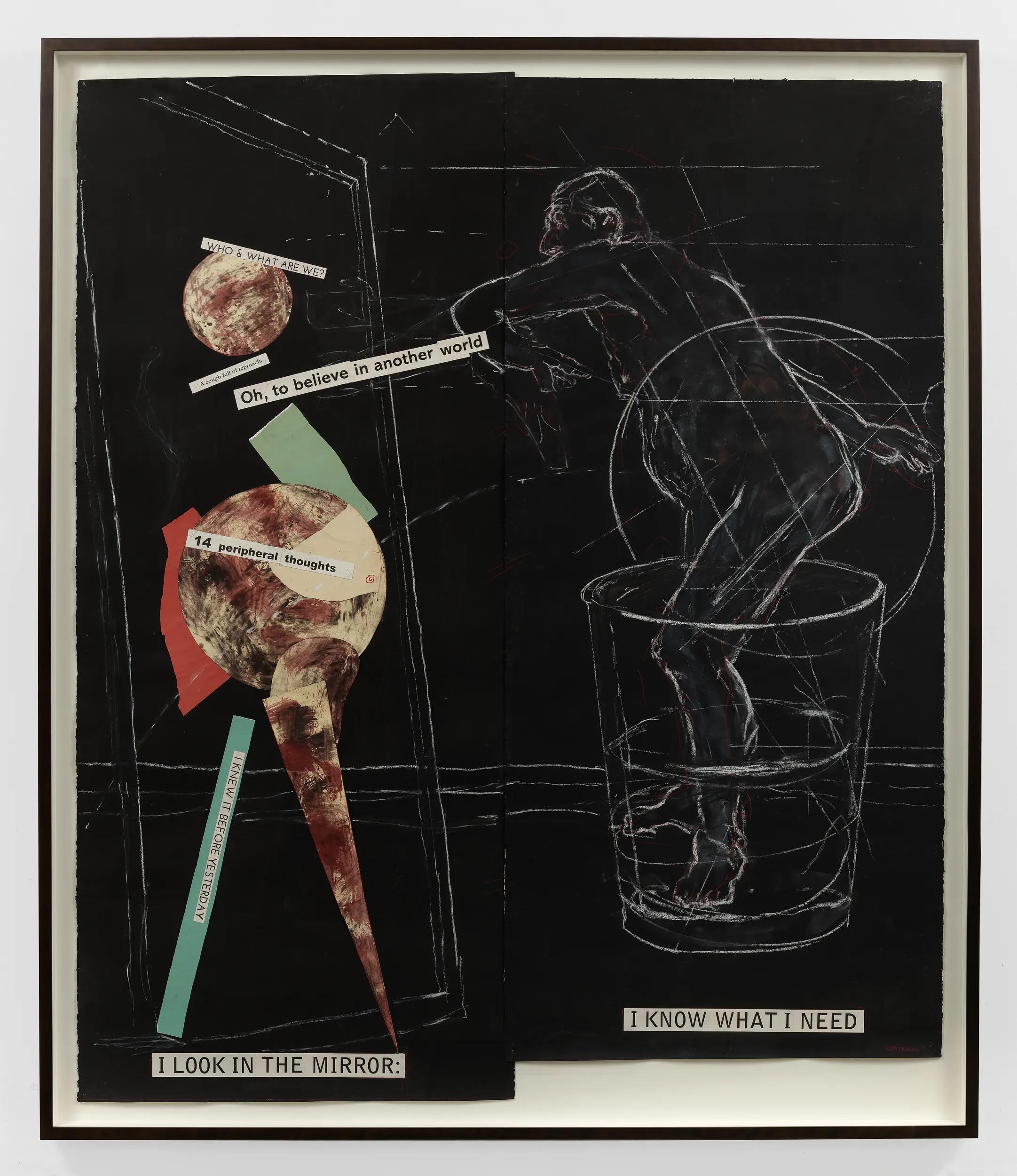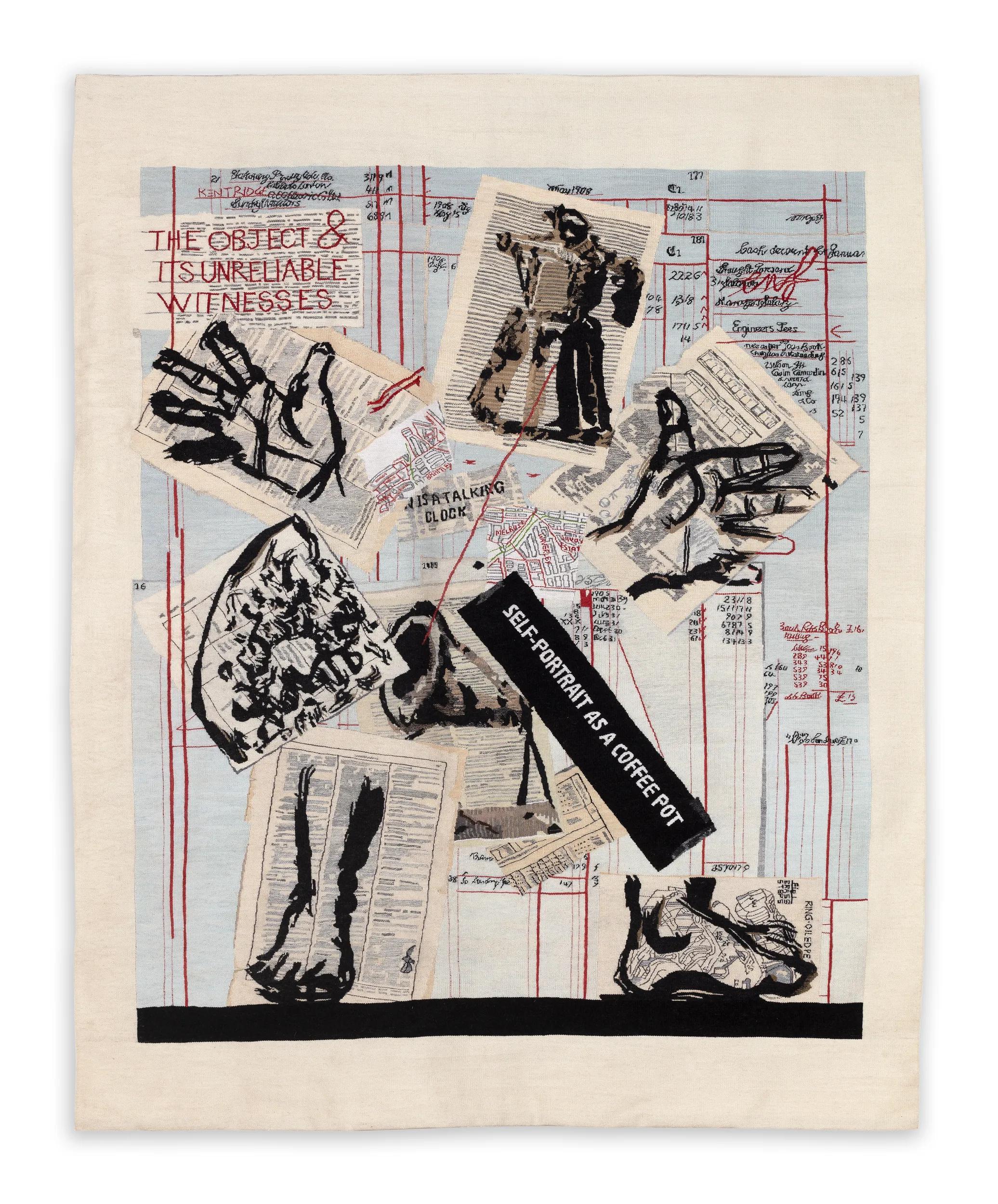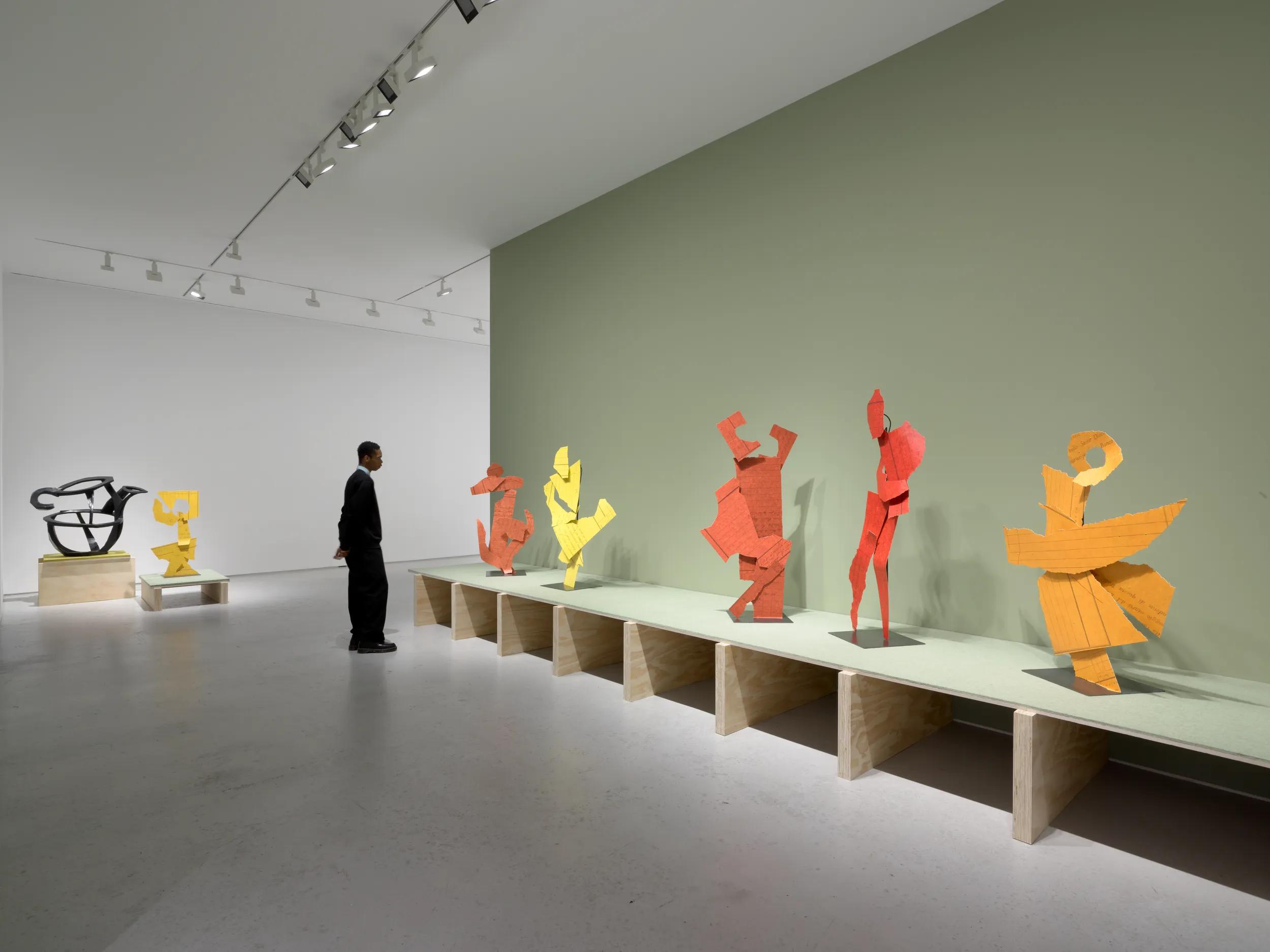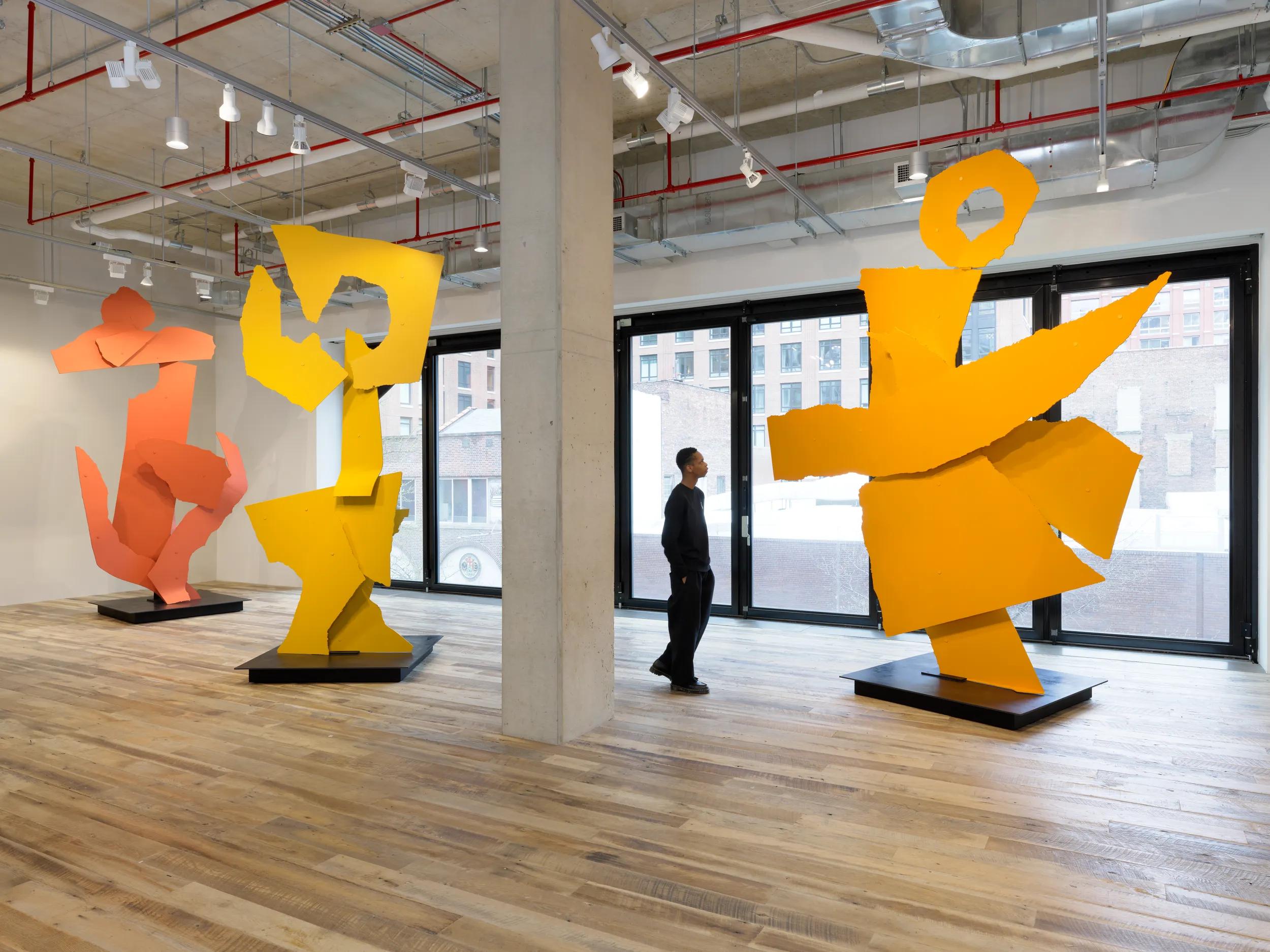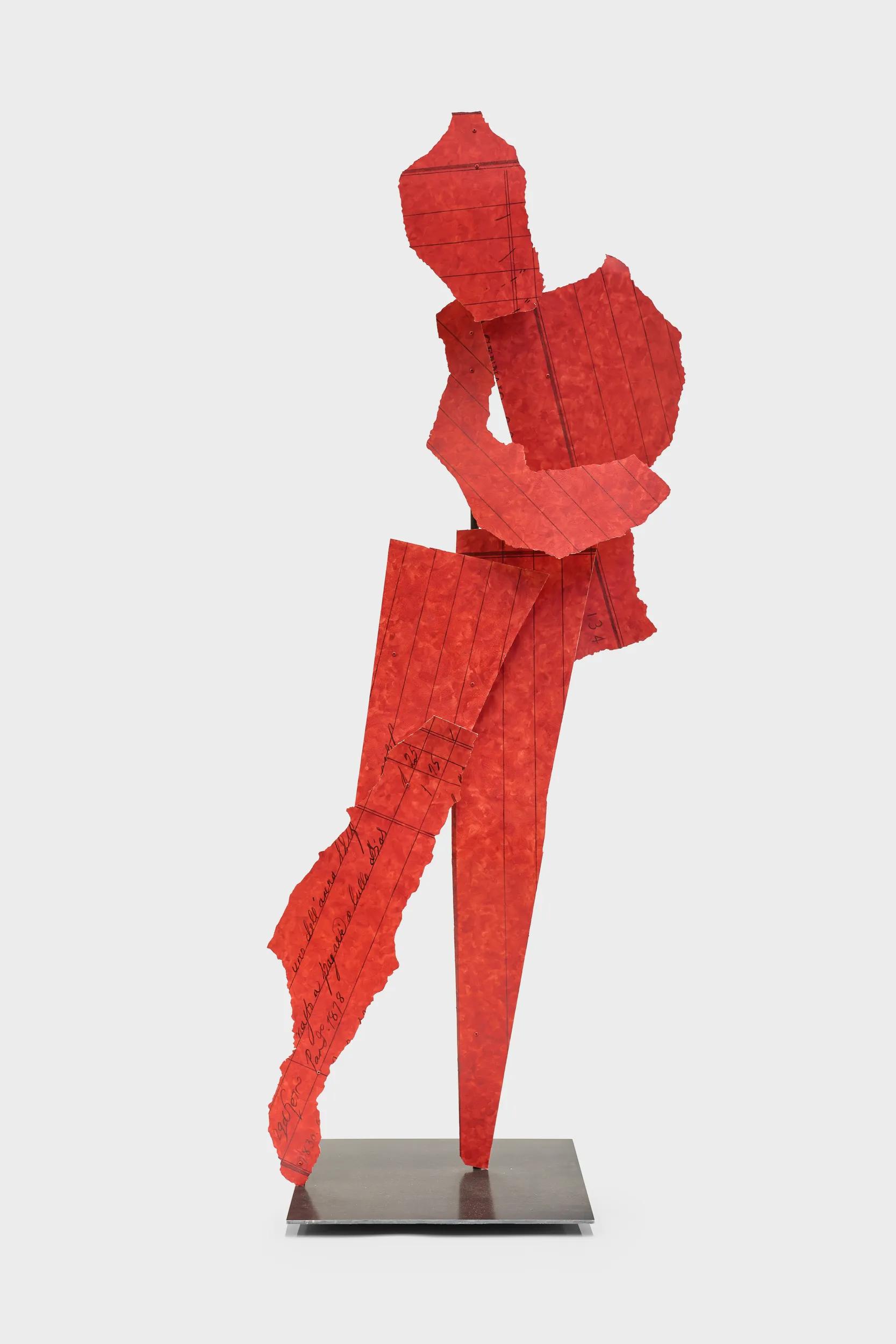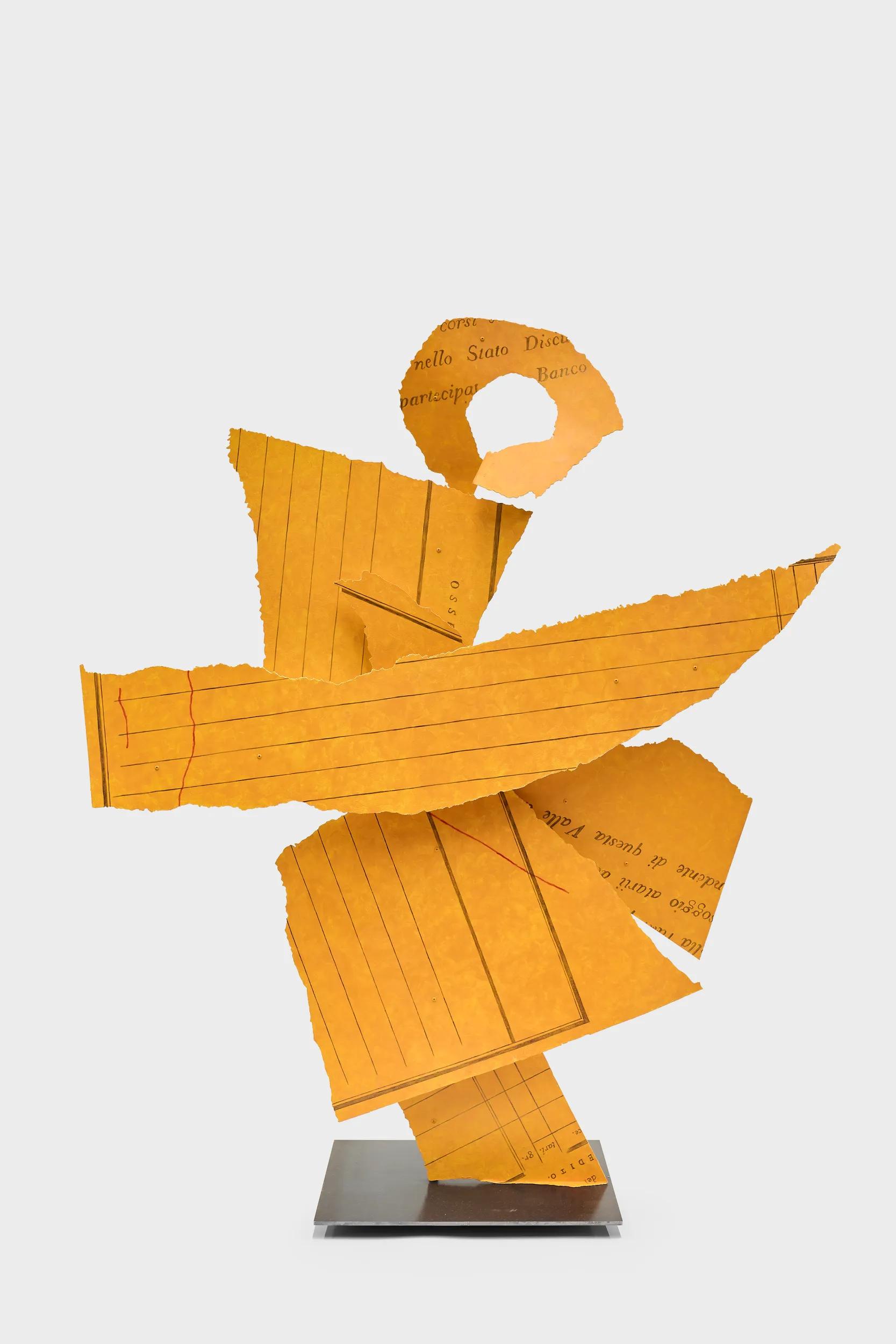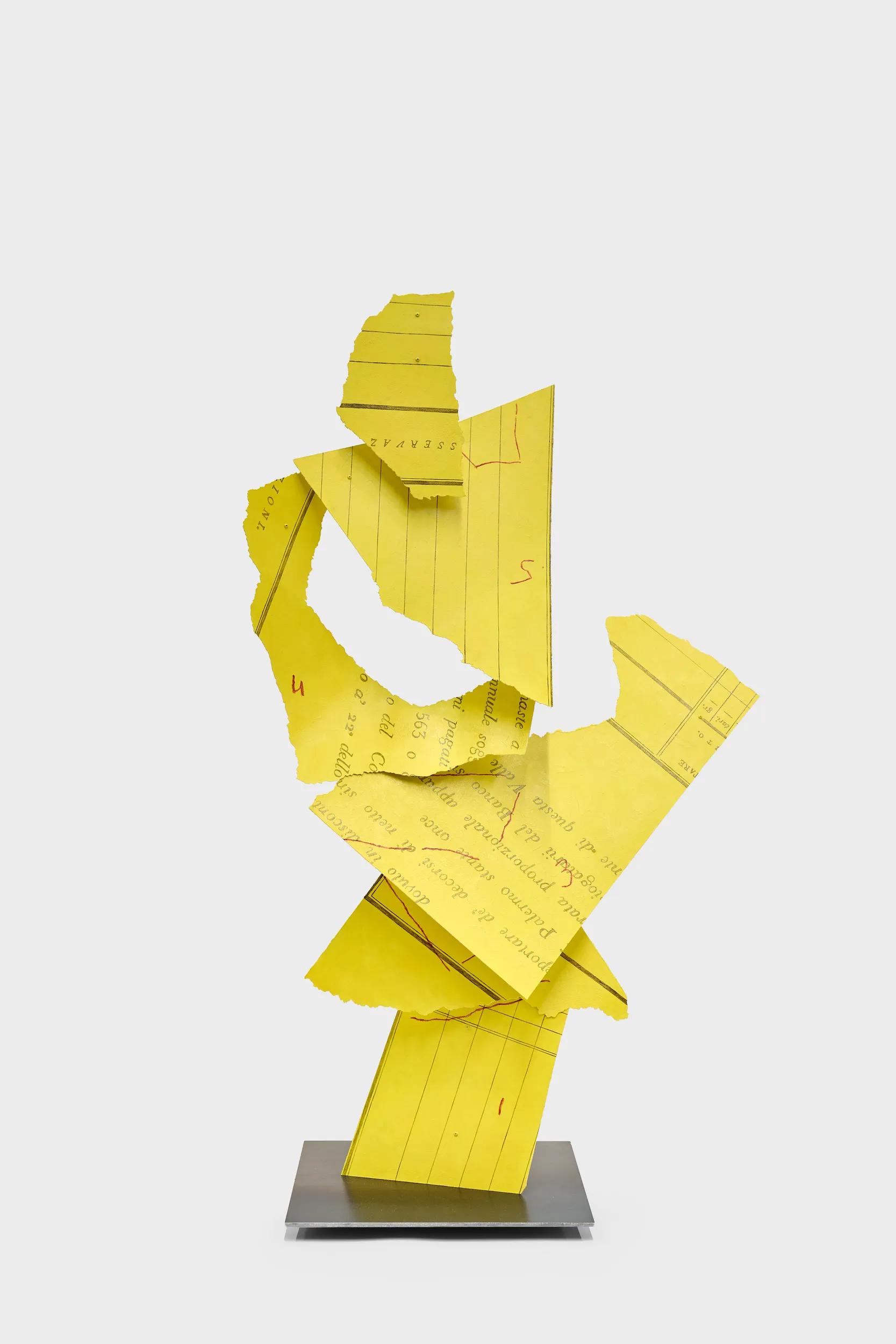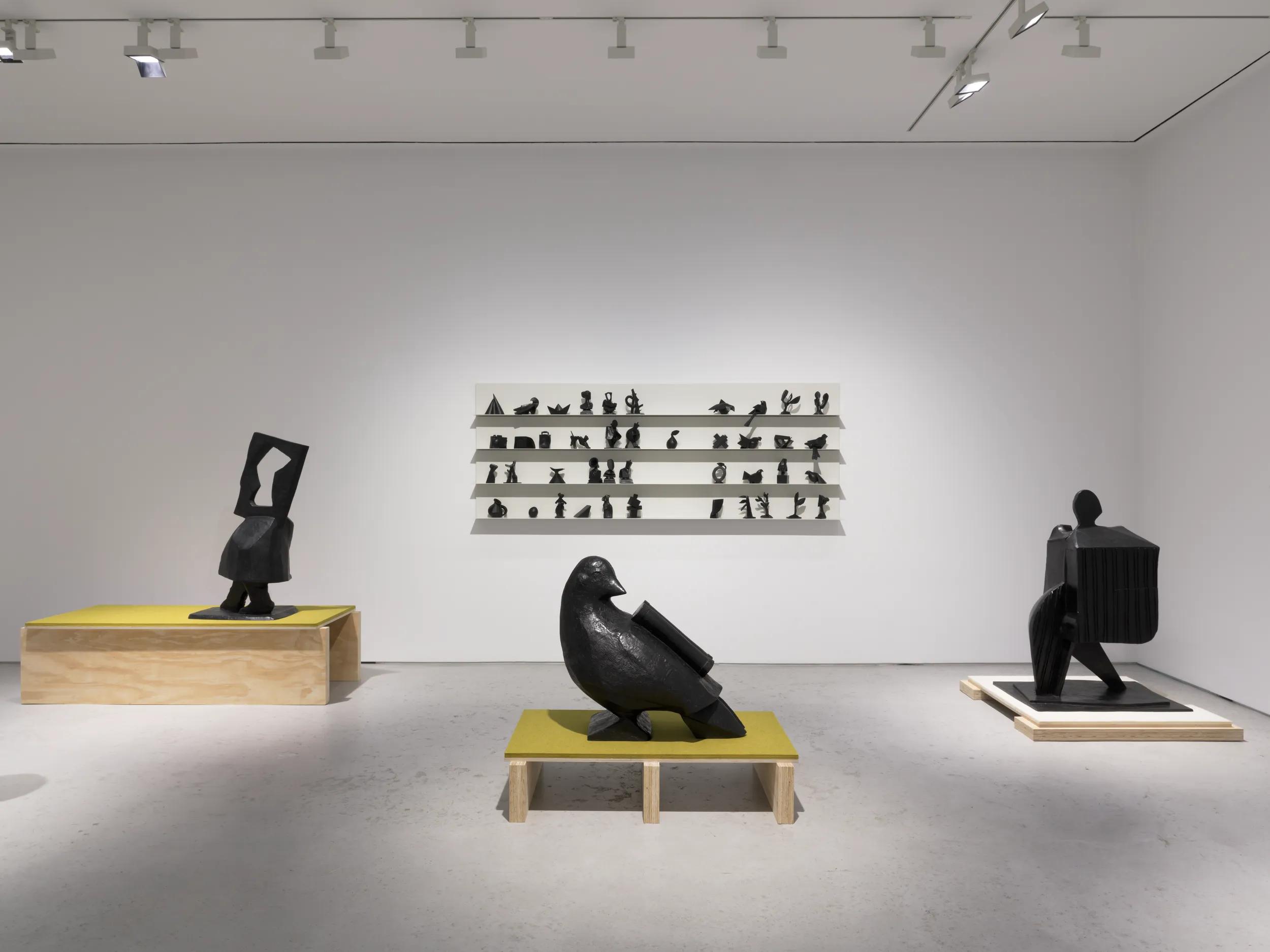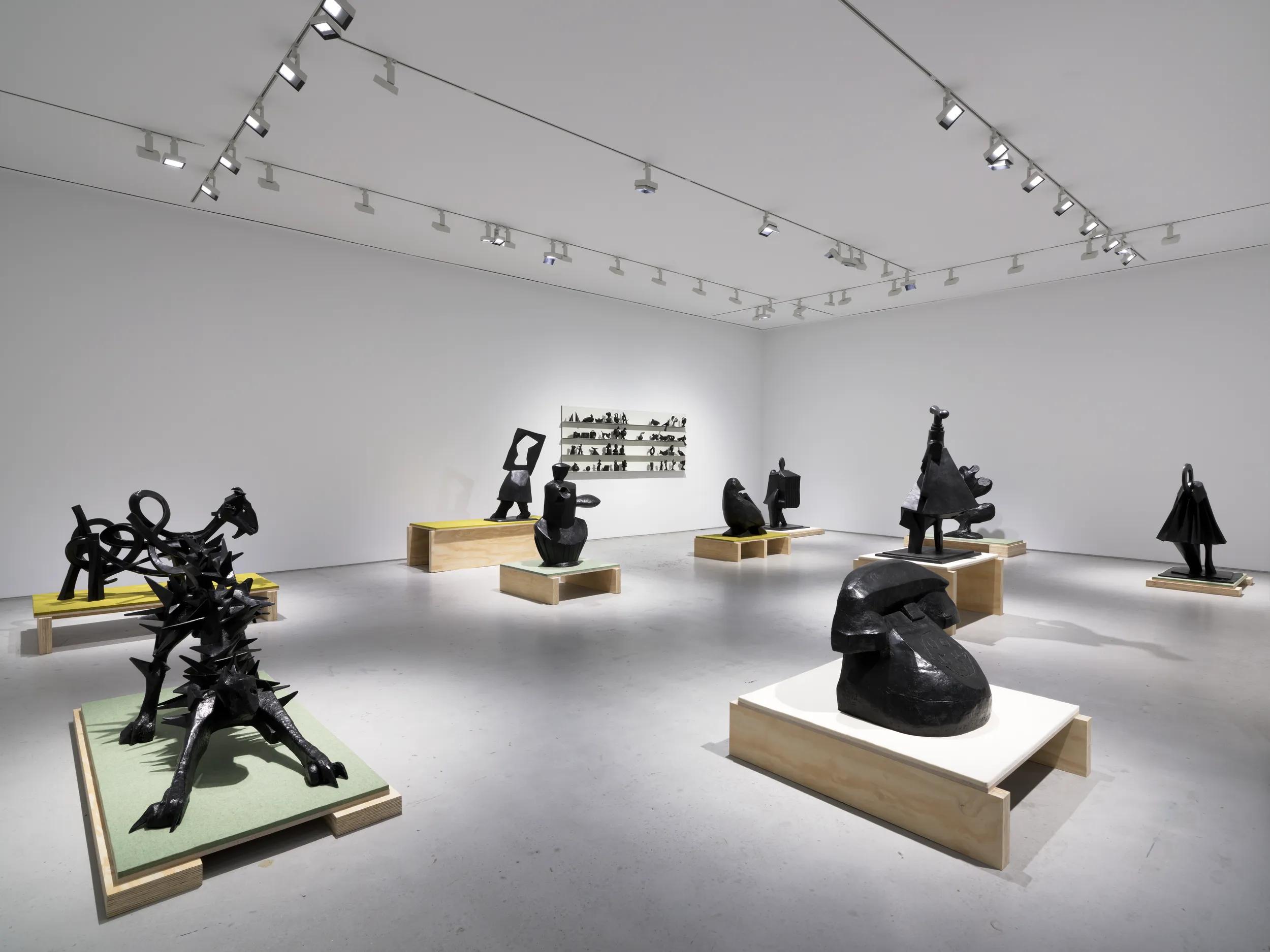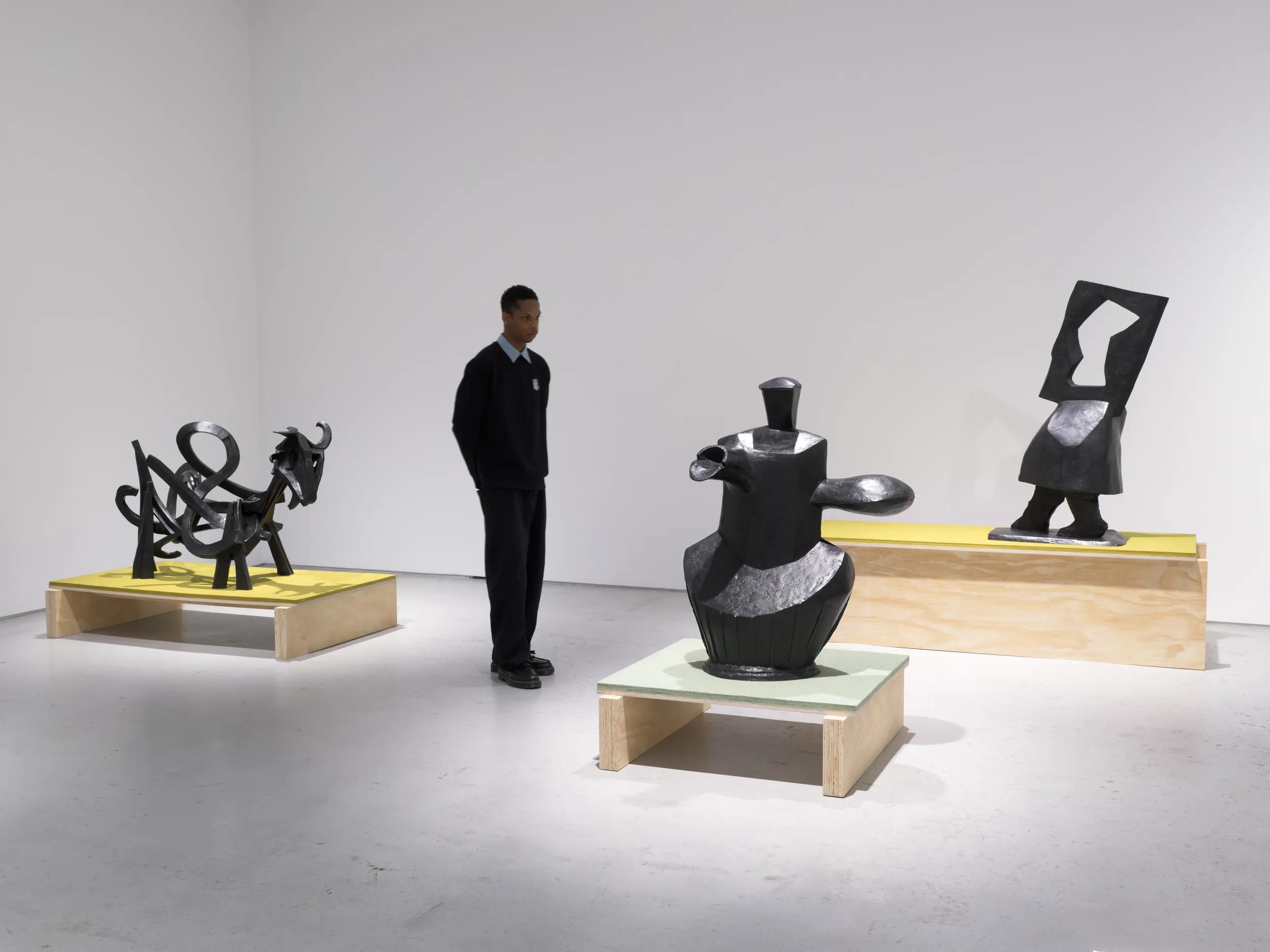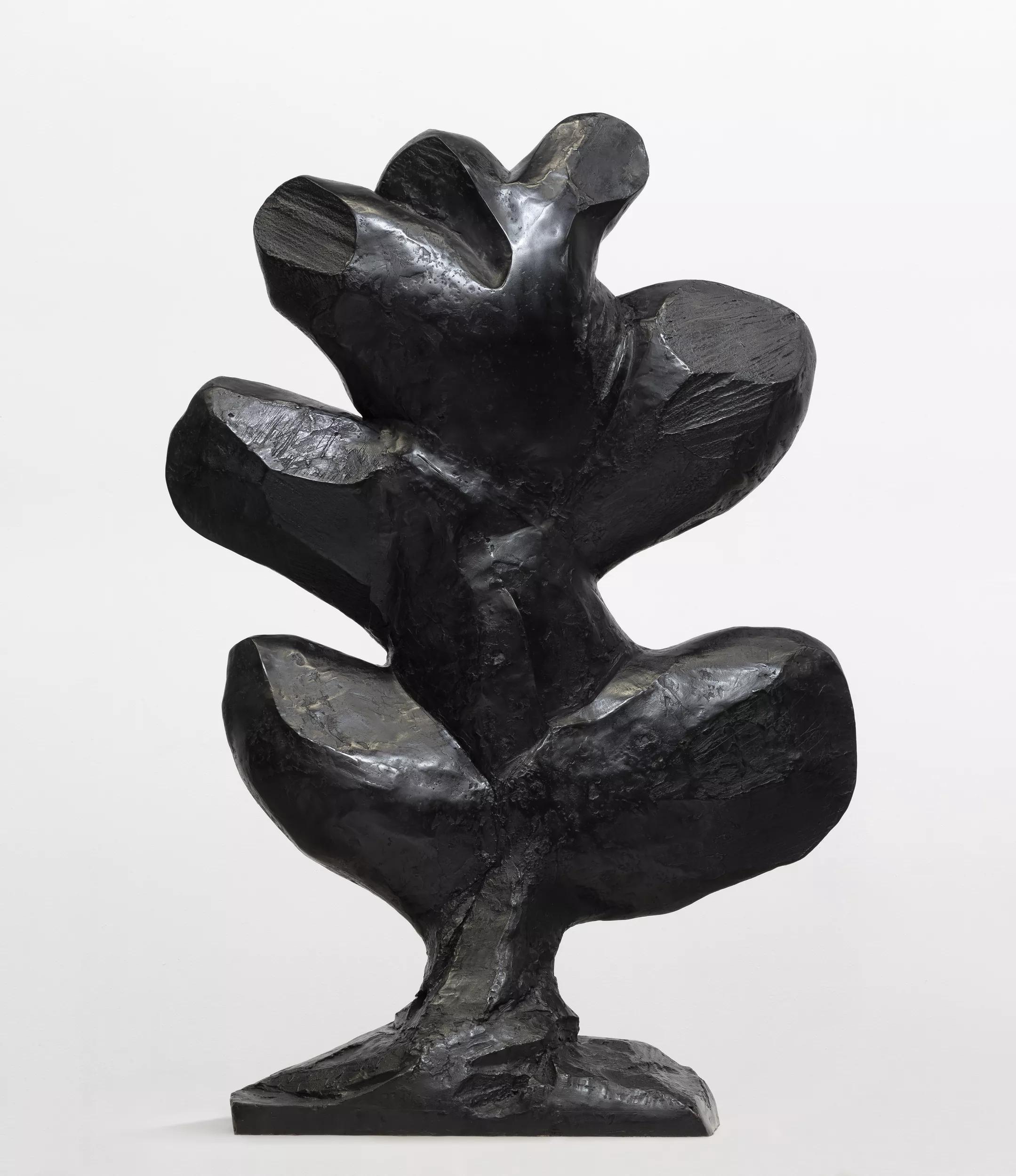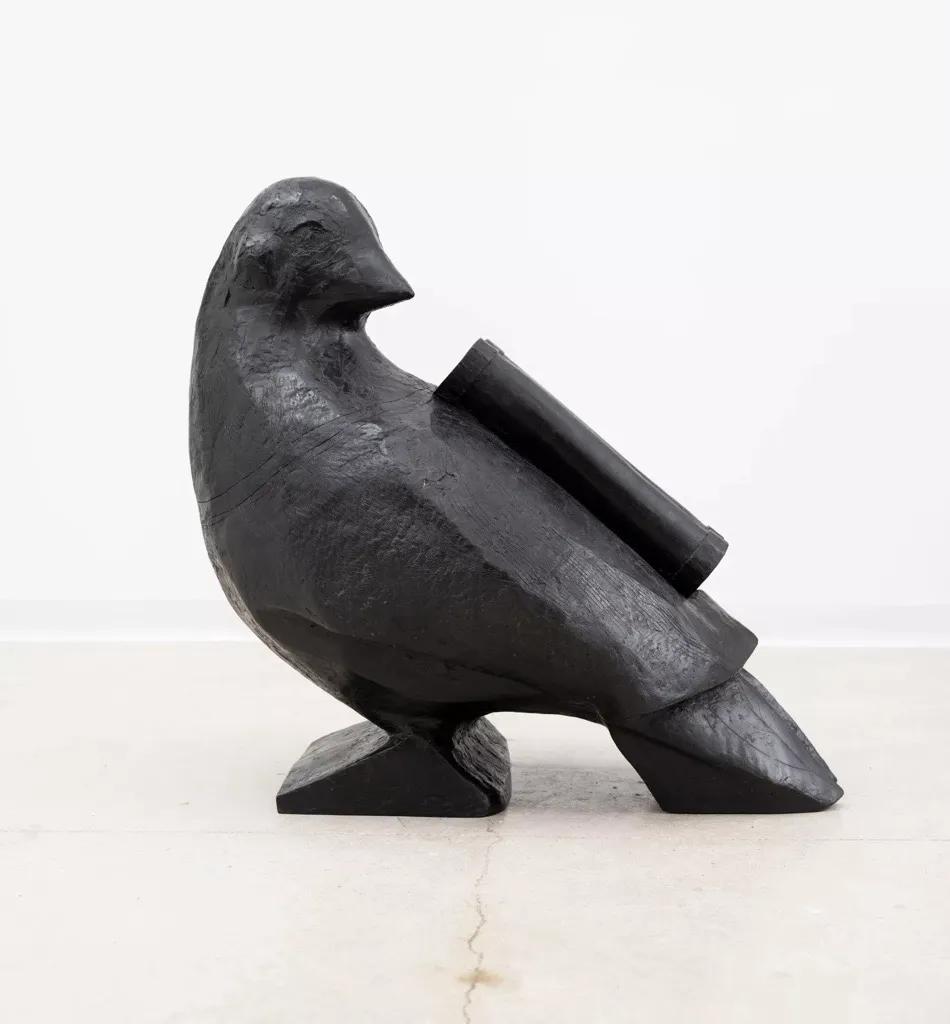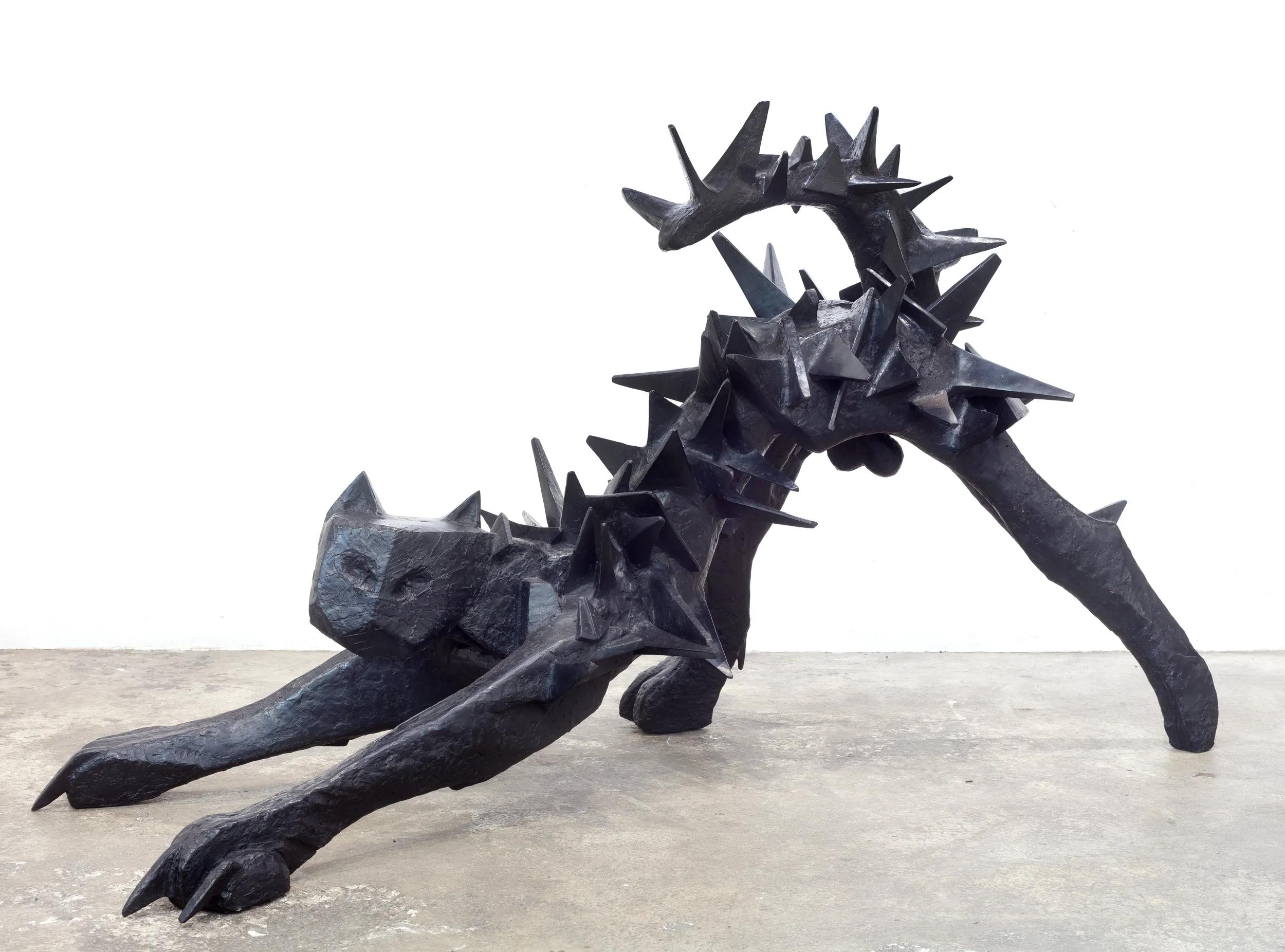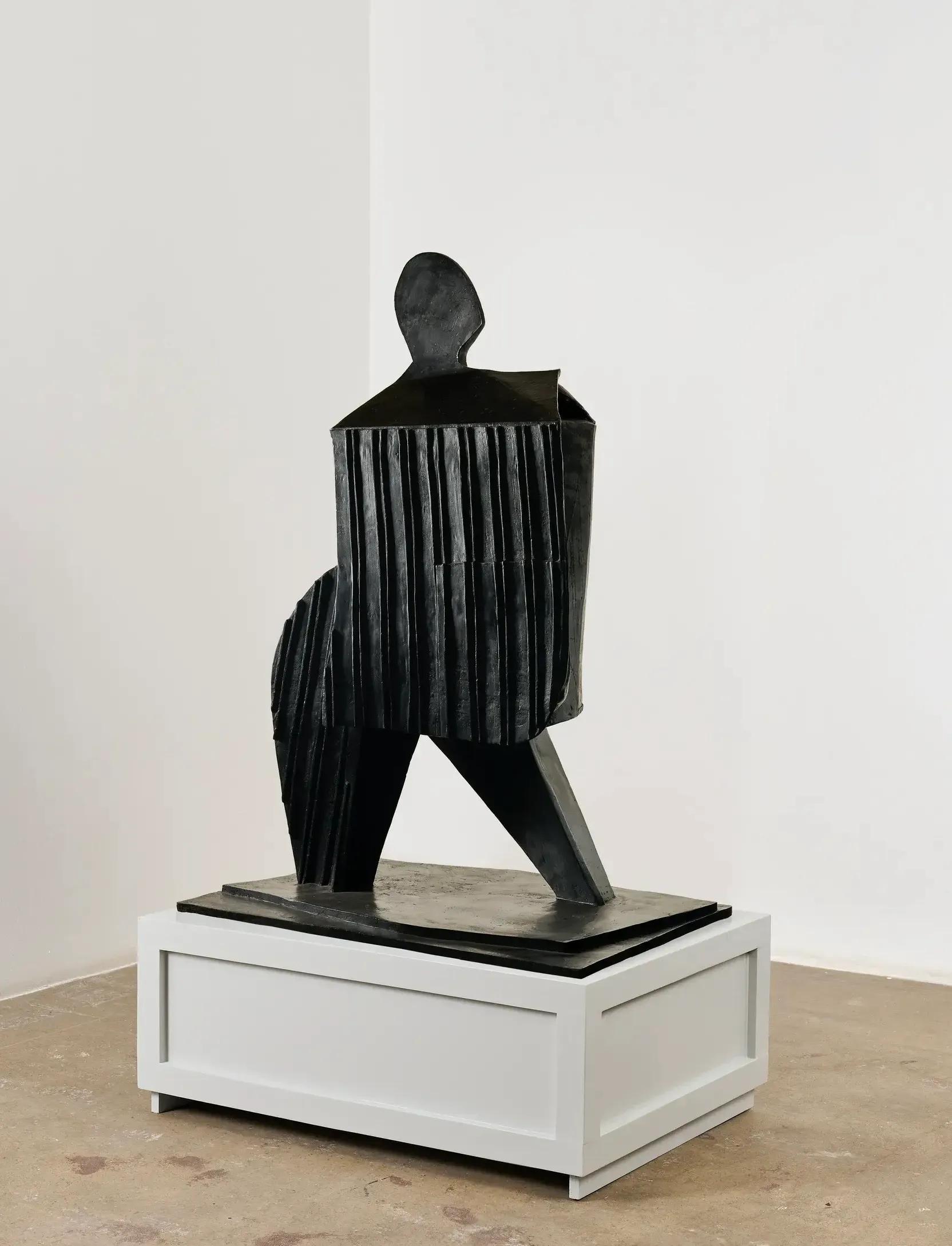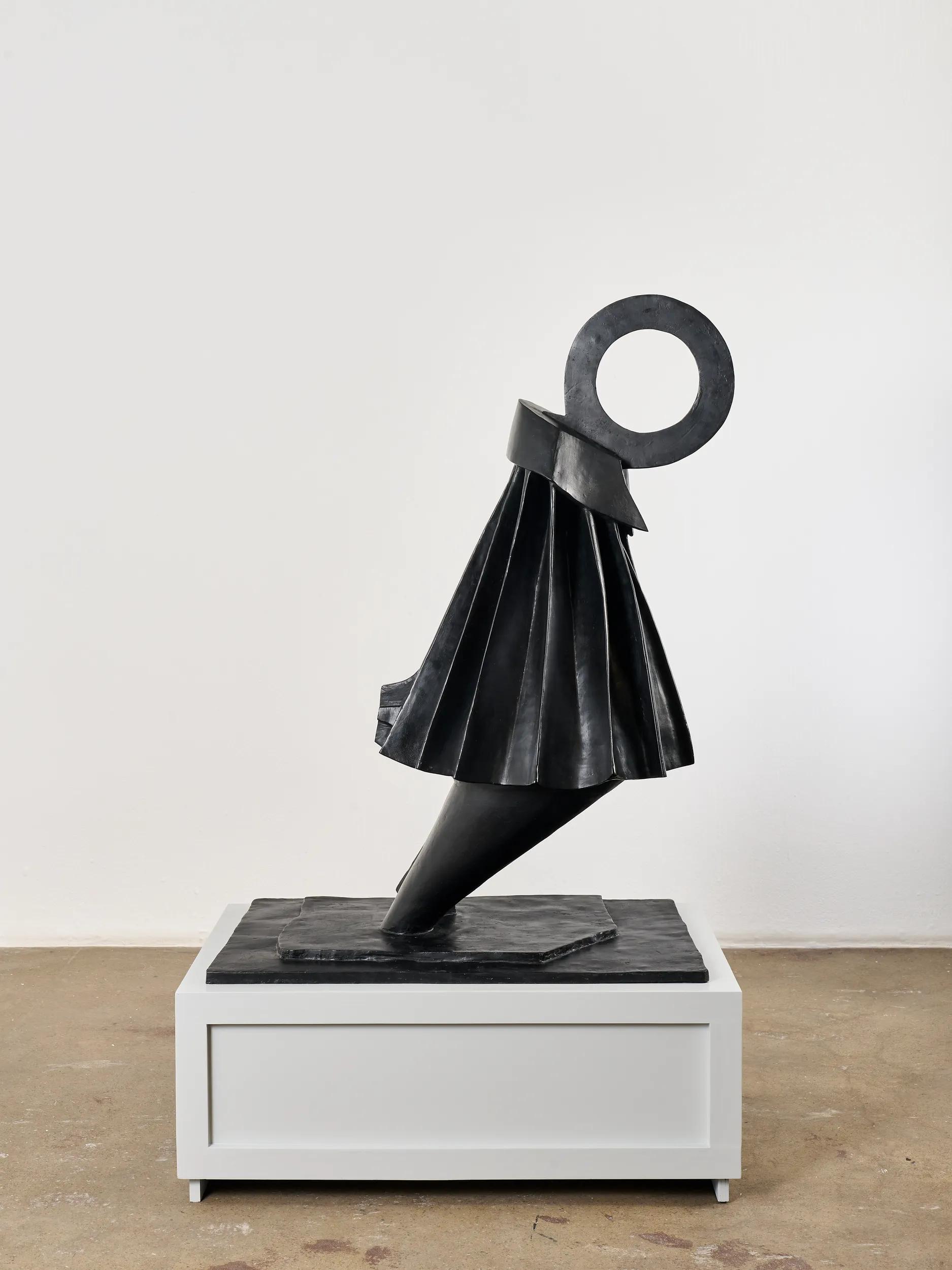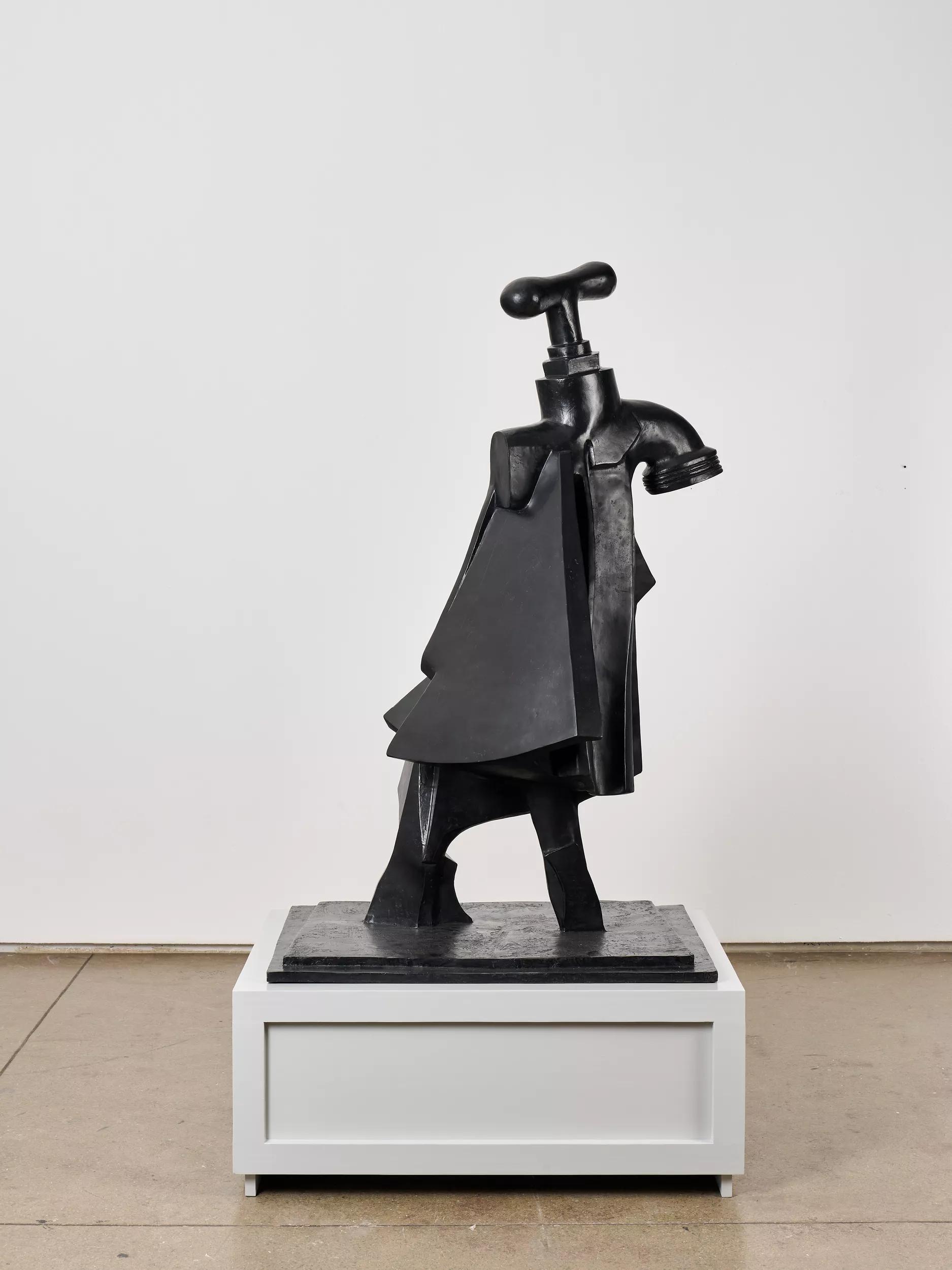William Kentridge
A Natural History of the Studio
1 May - 1 August 2025
New York, 22nd Street
‘The studio is an enlarged head. The images on the walls of the room and their movement stand in for the emergence and movement of thoughts in the head. The world is invited into the studio. There it is fragmented. The fragments are rearranged and sent back out into the world as a drawing, a performance, or a text.’—William Kentridge
With ‘A Natural History of the Studio,’ his first exhibition with Hauser & Wirth in New York, renowned South African artist William Kentridge will present his acclaimed episodic film series ‘Self-Portrait as a Coffee-Pot’ with more than seventy works on paper integral to its creation and an array of sculptures at 542 West 22nd Street. This immersive exhibition is the first ever to present all the drawings from this filmic masterpiece, hailed by critics as a moving, witty and ultimately wondrous synthesis of the personal and the political, the individual and the universal. Spanning two floors of the gallery’s 22nd Street building, ‘A Natural History of the Studio’ also extends to the gallery’s 18th Street location with a concise survey of Kentridge’s printmaking practice.
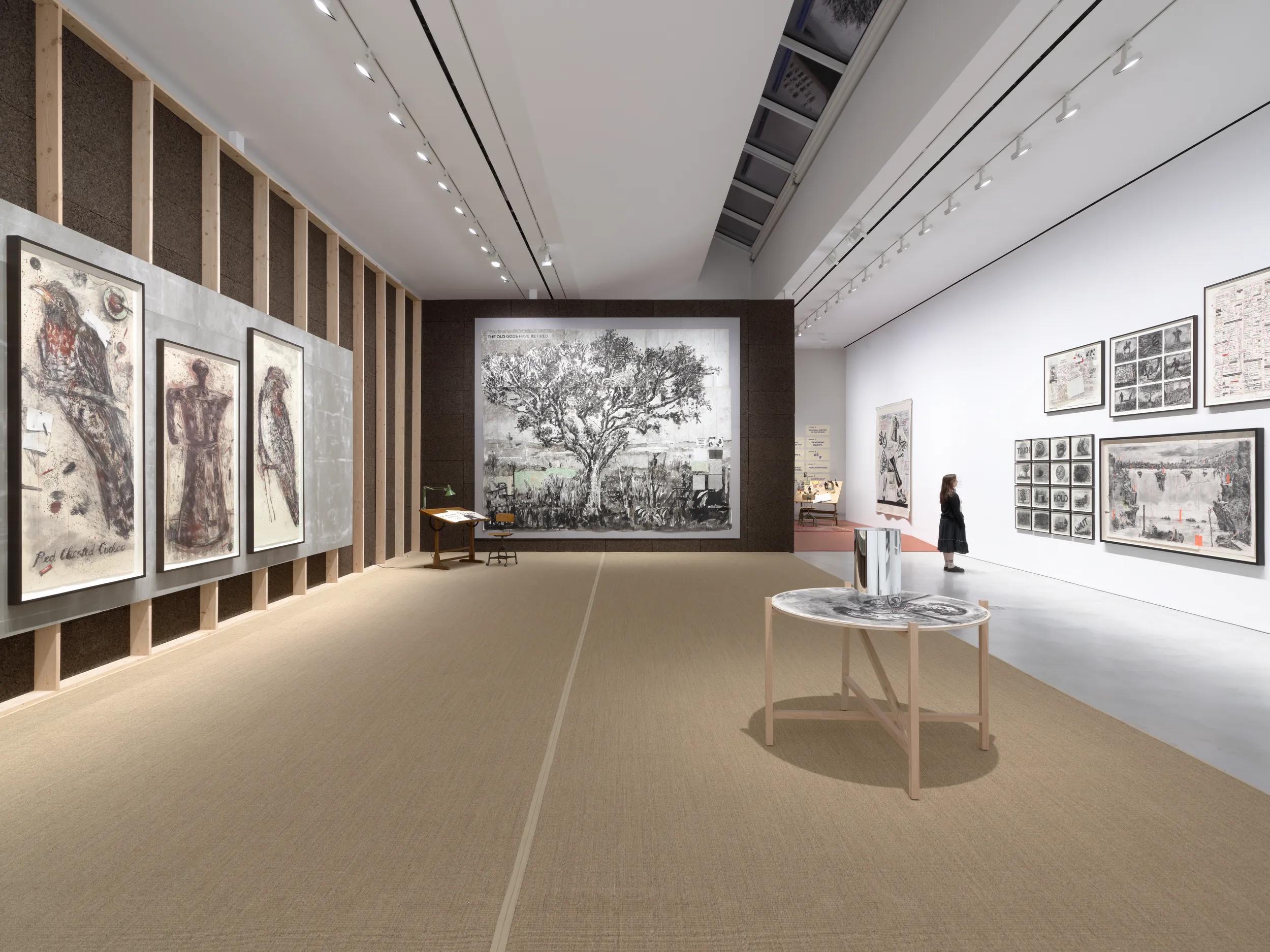
Conceived by the artist’s longtime collaborator Sabine Theunissen, the installation design for the first floor of ‘A Natural History of the Studio’ at 22nd Street will include the charcoal drawings used in the animation of ‘Self- Portrait as a Coffee-Pot’ and evoke the feeling of being in Kentridge’s working environment with him, a place where the walls hum with inspiration and every surface tells a story. Shot in his Johannesburg studio at the outset of the global COVID-19 pandemic and completed in 2024, the series includes nine thirty-minute episodes that bring viewers inside the artist’s mind.
Through a blend of Kentridge’s signature stop-motion technique, live action performance and philosophical dialogue, ‘Self-Portrait as a Coffee-Pot’ delves into subjects like Greek mythology, the history of mining in Johannesburg, colonialism in Africa and Soviet absurdities. And here, as in his wider body of work, the seemingly mundane and familiar household coffee pot becomes a stand-in for the artist, an avatar of the art-making process in which a steady flow of ideas is akin to the bubbling of coffee brewing. In several episodes of the series, Kentridge is joined by collaborators and assistants; in others he is seen debating and squabbling with a series of doppelgängers in a playful externalization of his internal creative struggles. Thus, ‘Self-Portrait as a Coffee-Pot’ serves as both a celebration of creativity and a snapshot of Kentridge’s pandemic experience.
The second floor of the exhibition will explore the relationship between drawing and sculpture in Kentridge’s oeuvre. Among works on view here will be a selection of ‘Paper Procession’ sculptures. Made from aluminum panels fixed to a steel armature and hand-painted in vibrant oil paint, these works are based on a series of small-scale paper sculptures Kentridge made from pages of a 19th century accounting journal from the Chiesa di San Francesco Saverio in Palermo, Italy. The works feel like moving sketches—ephemeral yet powerful—and extend Kentridge’s exploration of history, memory and transformation using humble materials to challenge grand narratives.
Glyphs also make an appearance in the single channel animated video on view titled ‘Fugitive Words’ (2024). The film opens with an overhead view of Kentridge’s hands flipping through the pages of one his many notebooks—a vital part of his creative process and an extension of his studio—where sketches, scores, diagrams, lists and phrases appear. The scene quickly develops into a dreamlike, non-narrative journey through the artist’s mind, where fleeting words, shifting images and even his drawing tools come to life to create an evolving landscape of memory and transformation, all set to Beethoven’s ‘Archduke’ piano trio.

Italics Plus
2024
The presentation will also include Kentridge’s bronze ‘glyphs’—sculptures of both everyday and arcane objects, words and icons that function together as a sort of visual glossary that can be arranged and re-arranged to construct different sculptural ‘sentences.’
William Kentridge: Self-Portrait as a Coffee-Pot
In William Kentridge’s ‘Self-Portrait as a Coffee-Pot,’ the artist enters into a rich dialogue with himself in the studio, hashing out questions of art, work, memory, history, and time in magnitudes ranging from the intimate to the universal. Created in close collaboration with the artist, this publication translates his series of films of the same name into book form, with exquisite special features such as tipped-in drawings and transparent interleaves bringing the vivid materiality of the artist’s studio into the hands of the reader.
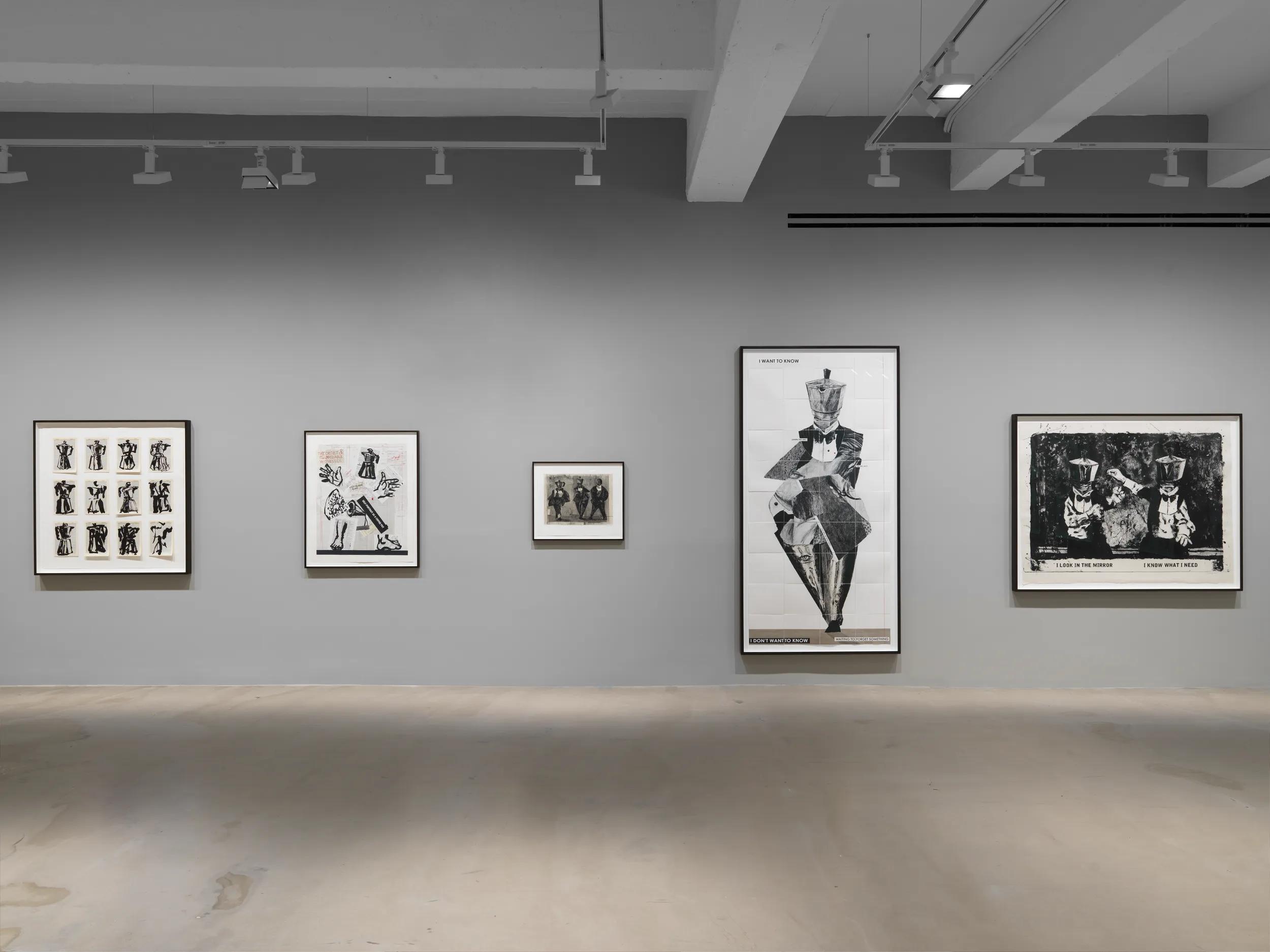
Also on view at New York, 18th Street
‘A Natural History of the Studio’ extends to Hauser & Wirth’s nearby 18th Street location with a selection of nearly thirty prints made by Kentridge over the last two decades.
Related Content
About the Artist

William Kentridge
William Kentridge is internationally acclaimed for his artworks, theater and opera productions. His method combines drawing and erasing, tearing, gestural painting, collage, weaving, casting, writing, film, performance, music, theater and collaborative practices to create works of art that are grounded in politics, science, literature and history, yet maintain a space for contradiction and uncertainty.
Born in 1955 in Johannesburg, South Africa, where he currently lives and works, Kentridge grew up under the pall of apartheid. His practice has parsed and questioned the historical record—responding to the past as it ineluctably shapes the present—and created a world within his art that both mirrors and shadows the inequities and absurdities of our own. By employing varied mediums, Kentridge seeks to construct meaning through the use of historical resources, including maps, language and everyday imagery, while always maintaining a space for contradiction and uncertainty.
Kentridge’s work has been seen in museums and galleries around the world since his first survey exhibition in 1998 at Palais des Beaux Arts, Brussels, including the Albertina Museum (Vienna), Castello di Rivoli Museo d’Arte Contemporanea (Turin), Johannesburg Art Gallery, Kunstmuseum Basel, Louisiana Museum (Humlebaek), Musée du Louvre (Paris), Museum of Modern Art (New York), Museum of Contemporary Art Sydney, Museo Nacional Centro de Arte Reina Sofía (Madrid), Norval Foundation (Cape Town), Royal Academy of Arts (London), Whitechapel Gallery (London) and Zeitz Museum of Contemporary Art Africa (Cape Town). He has participated a number of times in documenta (Kassel) (2012, 2002, 1997) and the Venice Biennale (2015, 2013, 2005, 1999), as well as the Sydney Biennale (2008) and the Istanbul Biennale (1995, 2015).
Kentridge’s opera productions began in 2005 with Mozart’s ‘The Magic Flute,’ which embarked on an international tour of opera houses after opening at La Monnaie in Brussels, Belgium. Subsequent productions include Shostakovich’s ‘The Nose’ and Alban Berg’s operas ‘Lulu’ and ‘Wozzeck,’ and have been seen at opera houses including the Metropolitan Opera (New York), La Scala (Milan), English National Opera (London), Opera de Lyon, Amsterdam Opera, the Sydney Opera House, as well as the KUNSTENFESTIVALDESARTS (Brussels) and the Salzburger Festspiele. Kentridge’s film, ‘Oh To Believe in Another World,’ made to accompany the performance of Shostakovich’s 10th Symphony, premiered at KKL Luzern in 2022 and has since been performed in theaters and at festivals worldwide.
Kentridge’s theatrical productions, performed in theatres and at festivals across the globe, include ‘Waiting for the Sibyl’ (2019), ‘The Head & the Load’ (2018), ‘Ursonate’ (2017), ‘Winterreise’ (2014), ‘Paper Music’ (2014), ‘Refuse the Hour’ (2011) and, in collaboration with the Handspring Puppet Company, ‘Il Ritorno d’Ulisse’ (1998), ‘Ubu & the Truth Commission’ (1997), ‘Faustus in Africa!’ (1995) and ‘Woyzeck on the Highveld’ (1992).
In 2016, Kentridge founded the Centre for the Less Good Idea in Johannesburg: a space for responsive thinking and making through experimental, collaborative and cross-disciplinary arts practices. The center hosts an ongoing program of workshops, public performances and mentorship activities.
Kentridge is the recipient of honorary doctorates from several universities including Yale, University of London and Columbia University. In 2010, he received the Kyoto Prize. In 2012, he was awarded the Commandeur dans l’ordre des Arts et des Lettres in France and he presented the Charles Eliot Norton Lectures at Harvard University. In 2015, he was appointed an Honorary Academician of the Royal Academy in London. In 2017, he received the Princesa de Asturias Award for the arts and, in 2018, the Antonio Feltrinelli International Prize. In 2019, he received the Praemium Imperiale award in painting in Tokyo. In 2021, he was made a Foreign Associate Member to the French Académie des Beaux Arts, Paris. In 2022, he was presented the Ordine della Stella d’Italia and, in 2023, he received the Olivier Award for Outstanding Achievement in Opera in London. As the Slade Professor of Fine Art for 2023/2024, Kentridge delivered a series of six lectures at the University of Oxford in January and February 2024.
His work can be found in the collections of public and private museums including Amorepacific Museum of Art (Seoul), Art Gallery of Western Australia (Perth), Art Institute of Chicago, Broad Art Foundation (Los Angeles), Carnegie Museum of Art (Pittsburgh), Castello di Rivoli Museo d’Arte Contemporanea (Turin), Centre Pompidou (Paris), Fondation Cartier (Paris), Fondation Louis Vuitton (Paris), Fundaçion Sorigue (Lerida), Guggenheim Abu Dhabi, Haus der Kunst (Munich), ICA Boston, Israel Museum (Jerusalem), JAG (Johannesburg), Kunsthalle Mannheim, Kunsthalle Praha (Prague), Kunstmuseum Basel, LACMA (Los Angeles), Louisiana Museum (Humlebaek), Luma Foundation (Arles), MAC (Montreal), MAXXI (Rome), Moderna Museet (Stockholm), MoCA (Los Angeles), MUDAM (Luxembourg), MoMA (New York), Museum of Fine Arts (Budapest), National Gallery of Australia (Canberra), National Gallery of Canada (Ottawa), National Museum of Modern Art (Kyoto), National Gallery of Victoria (Melbourne), Norval Foundation (Cape Town), San Diego Museum of Art, SFMoMA (San Francisco), Sharjah Art Foundation, Sifang Art Museum (Nanjing), Stedelijk Museum (Amsterdam), Tate (London), Vehbi Koç Foundation (Istanbul) and Zeitz MOCAA (Cape Town), as well as private collections worldwide.
Current Exhibitions
1 / 12
